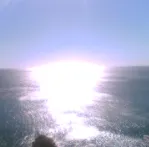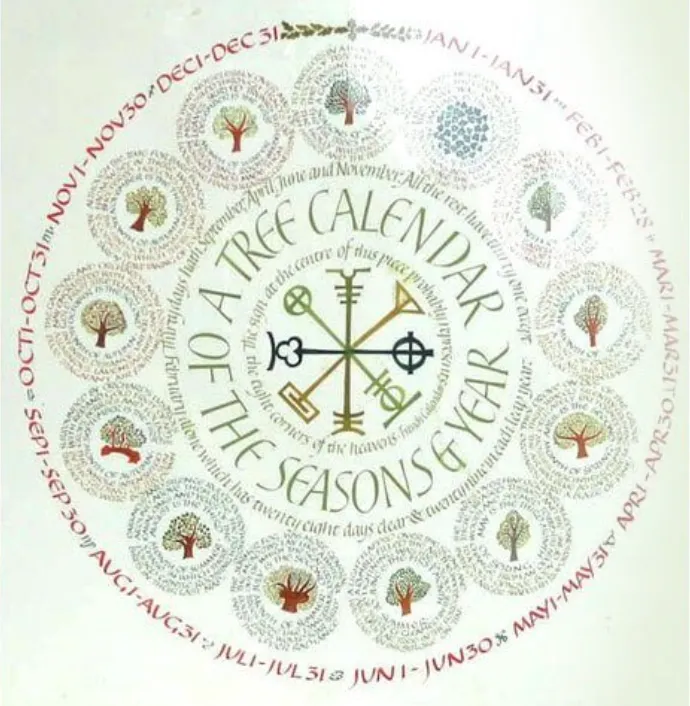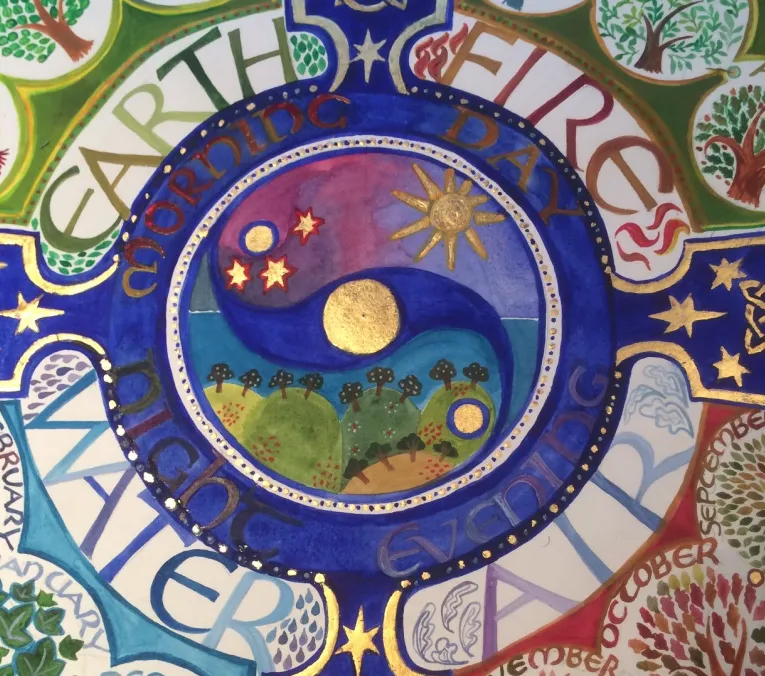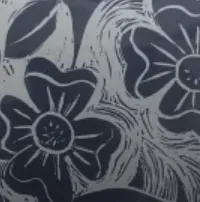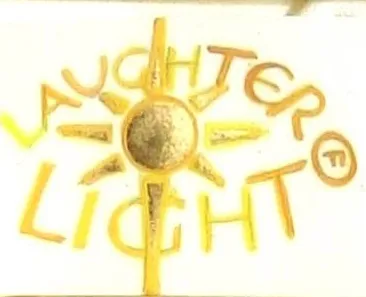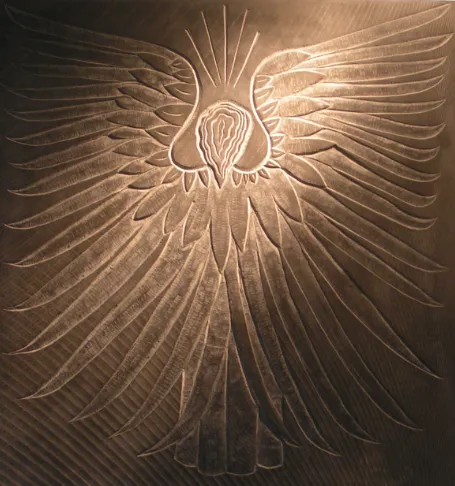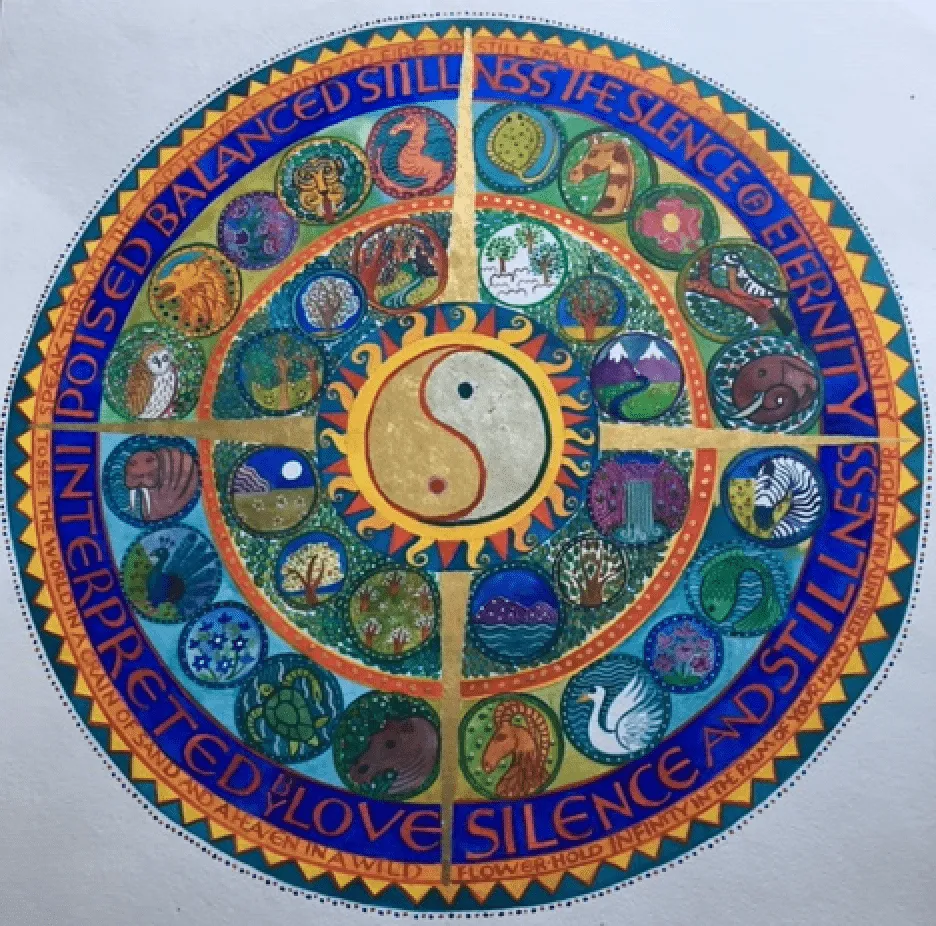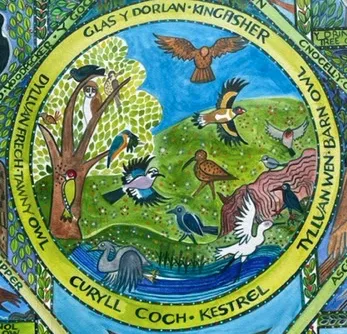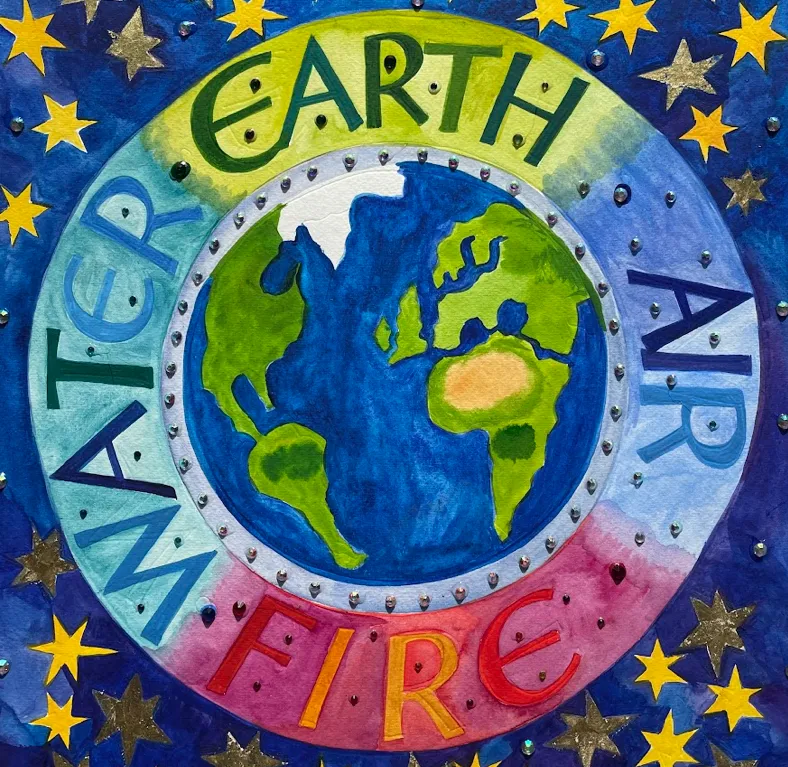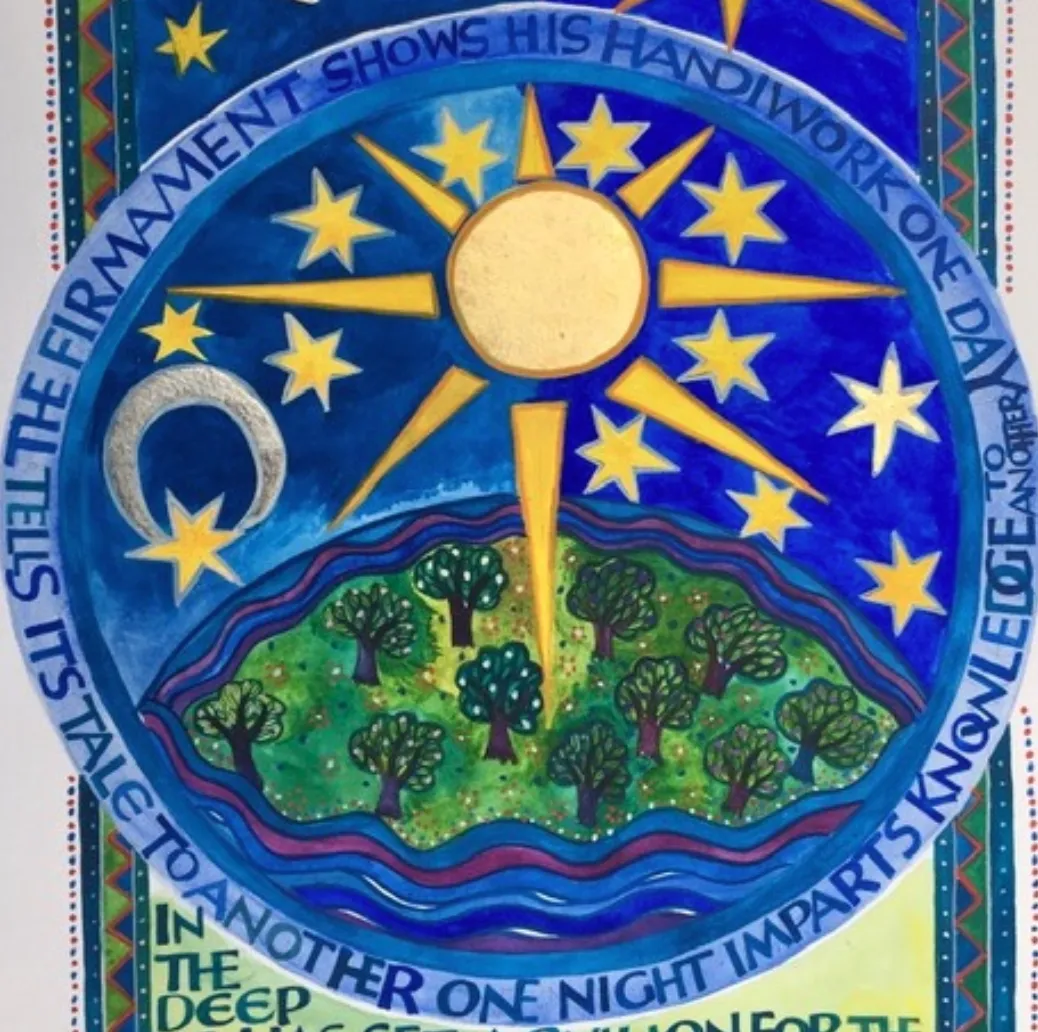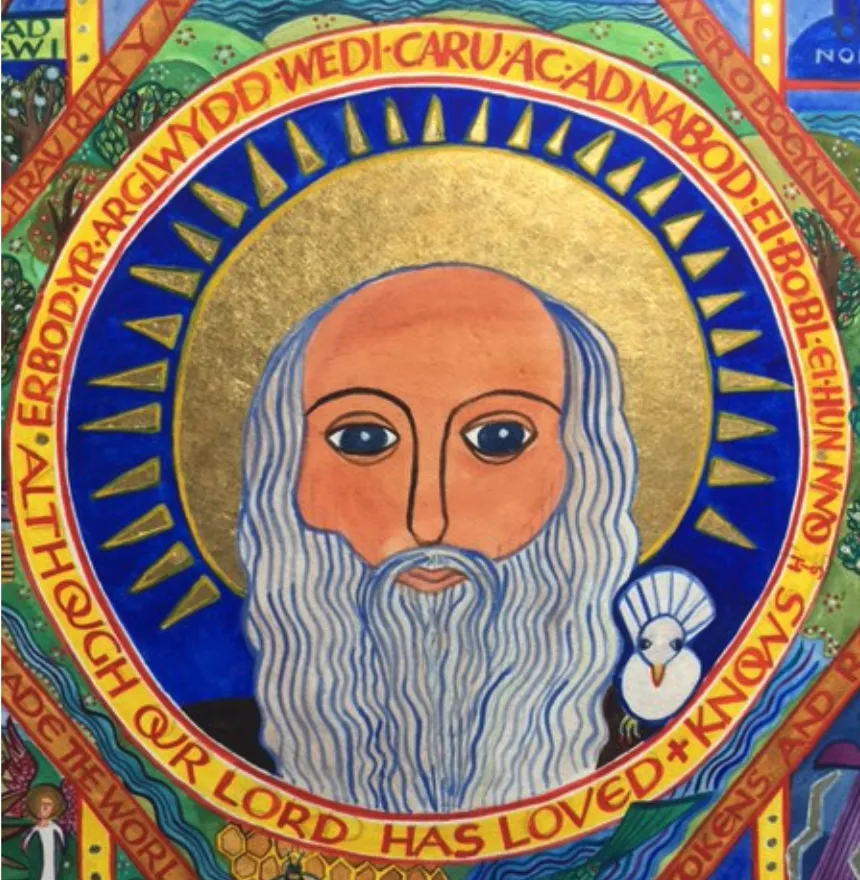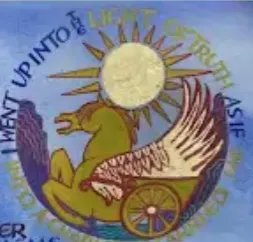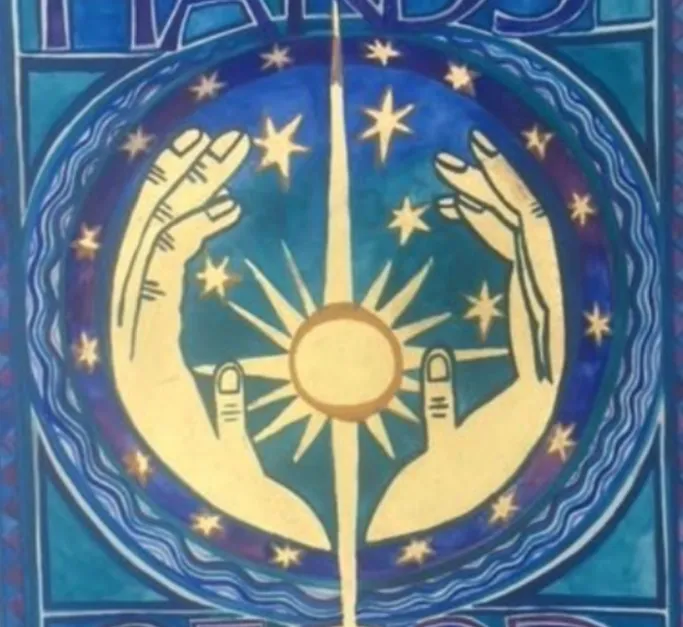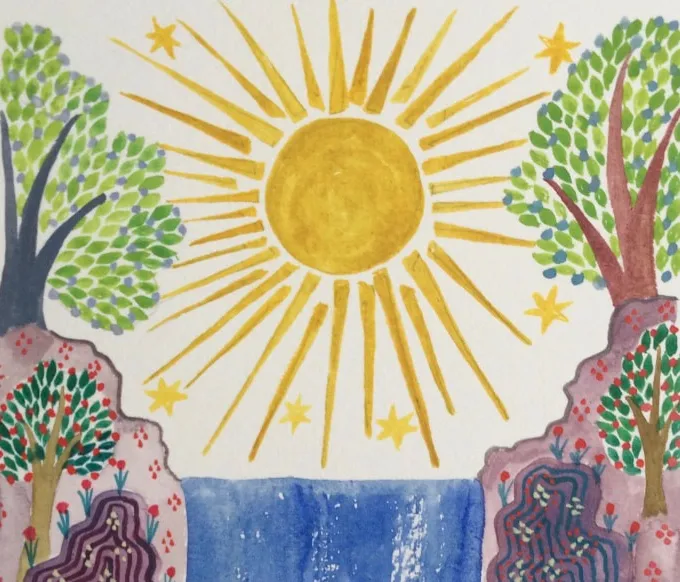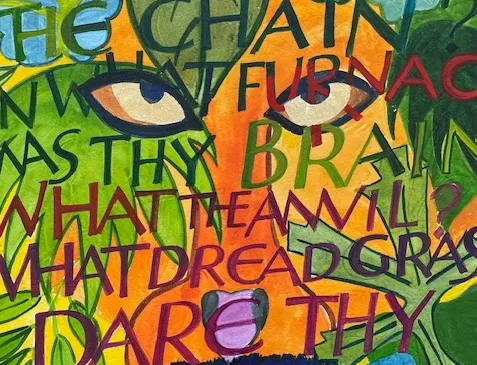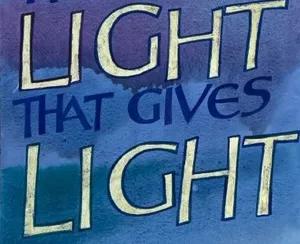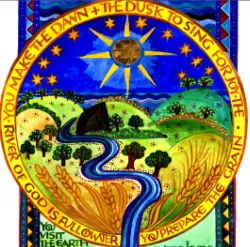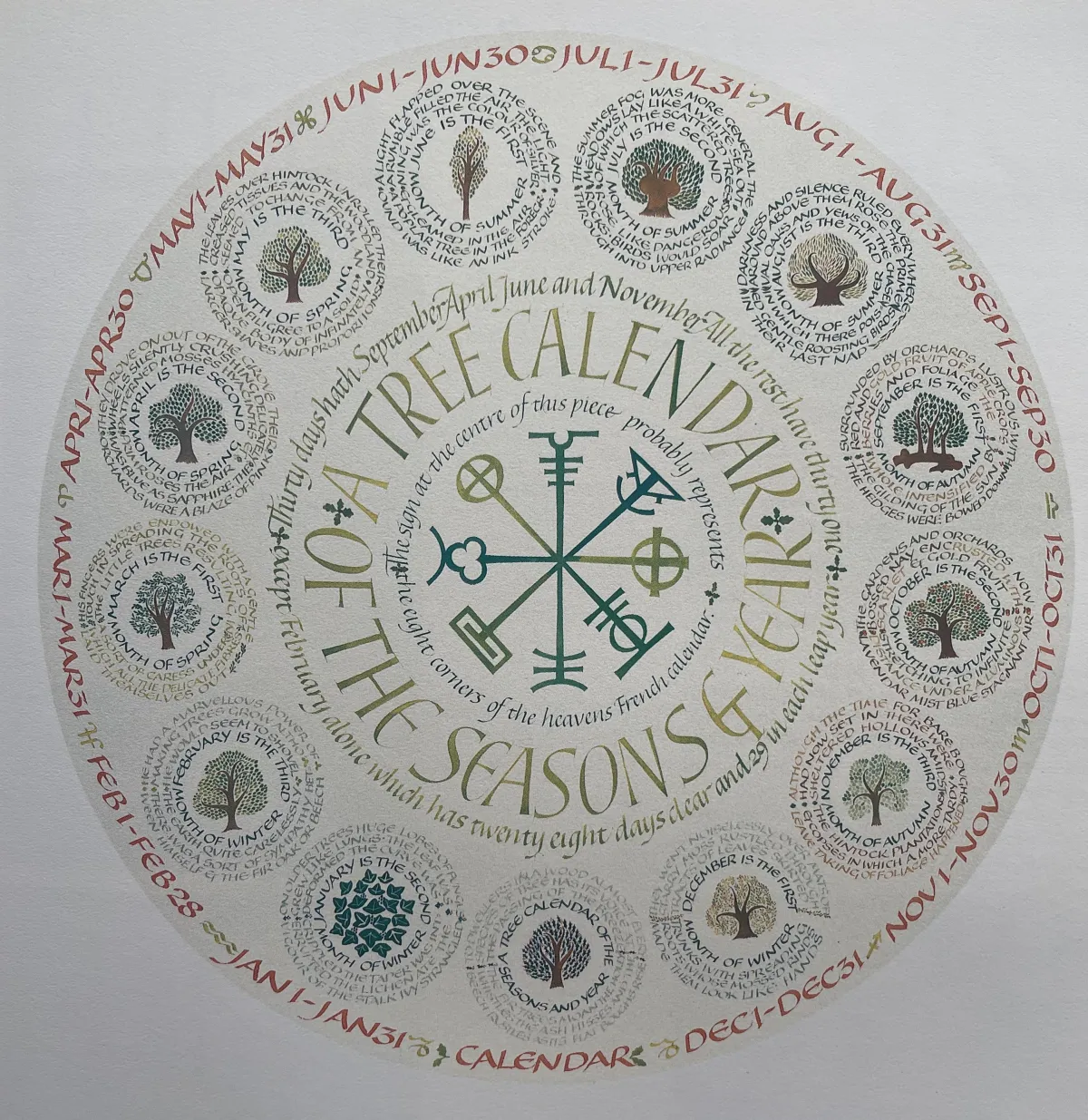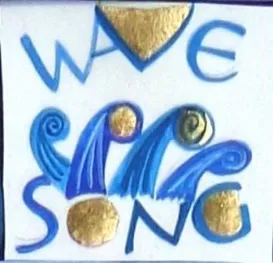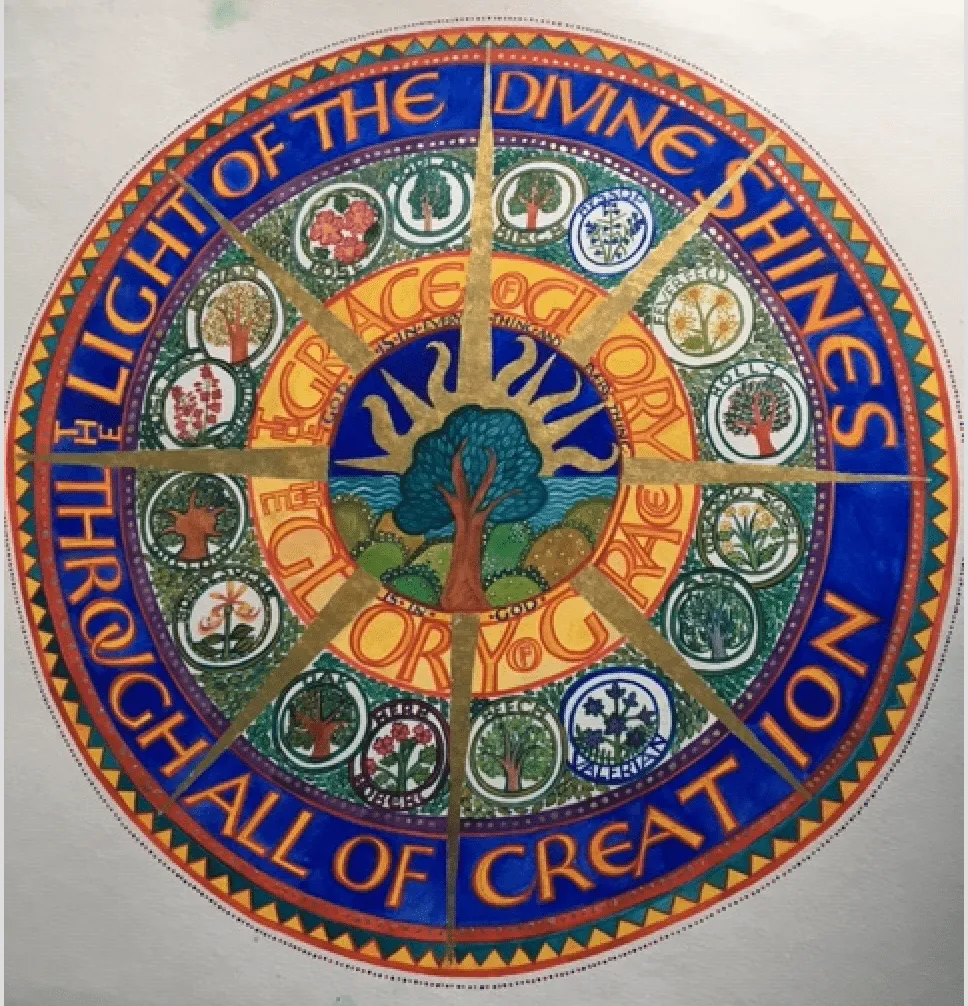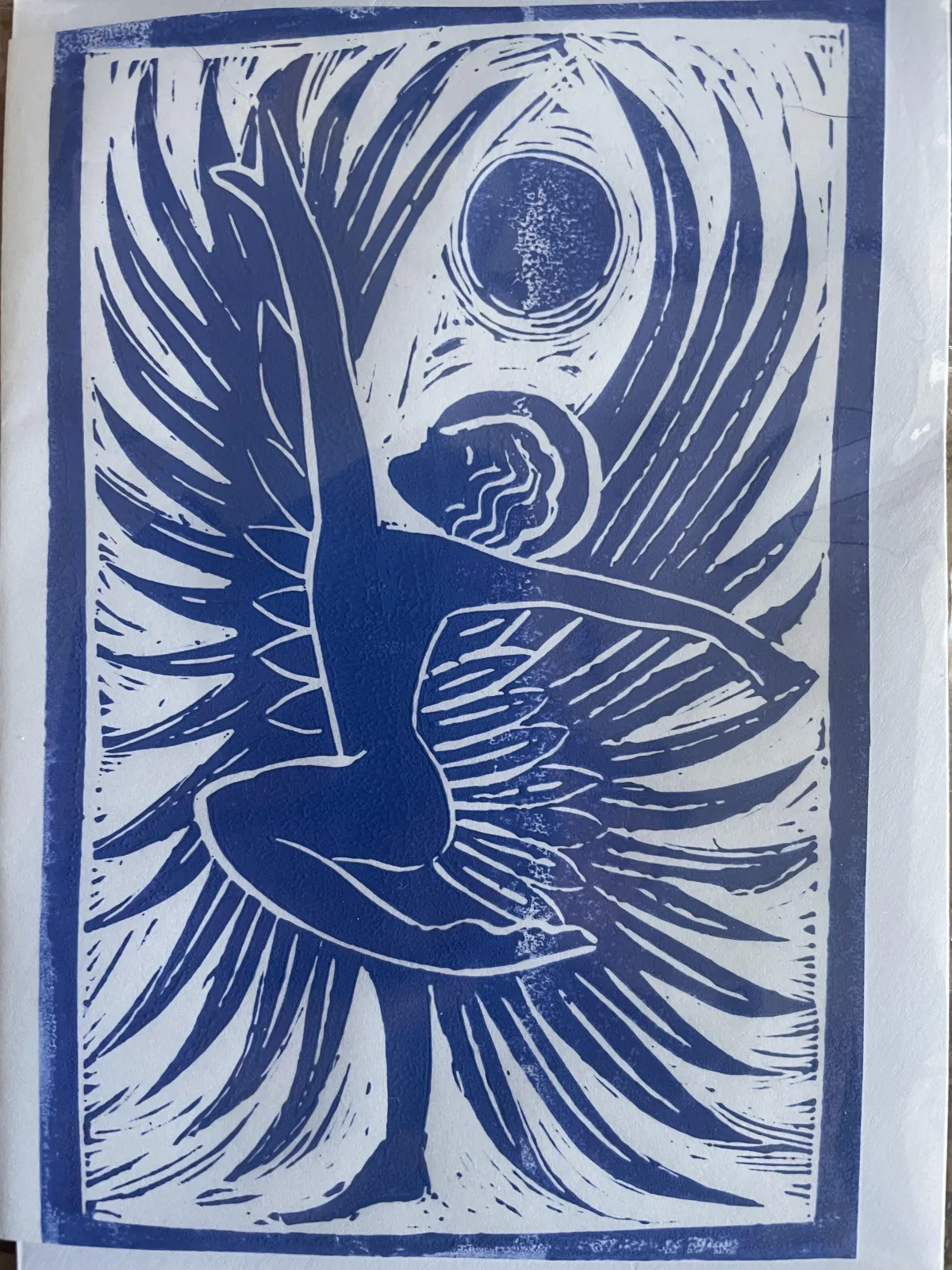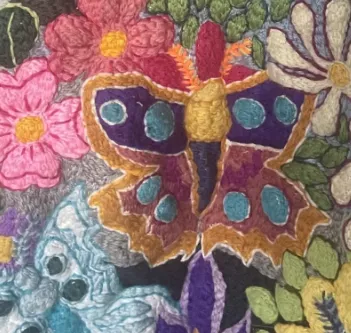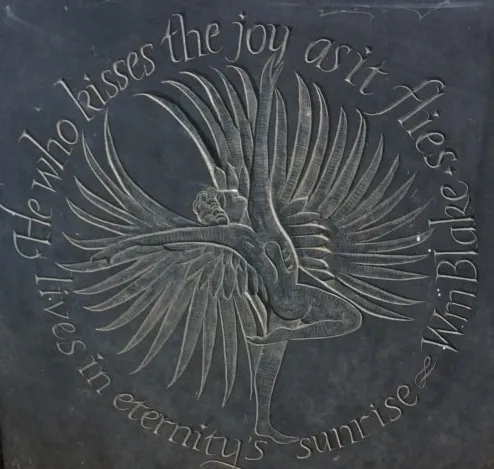Our Precious Planet
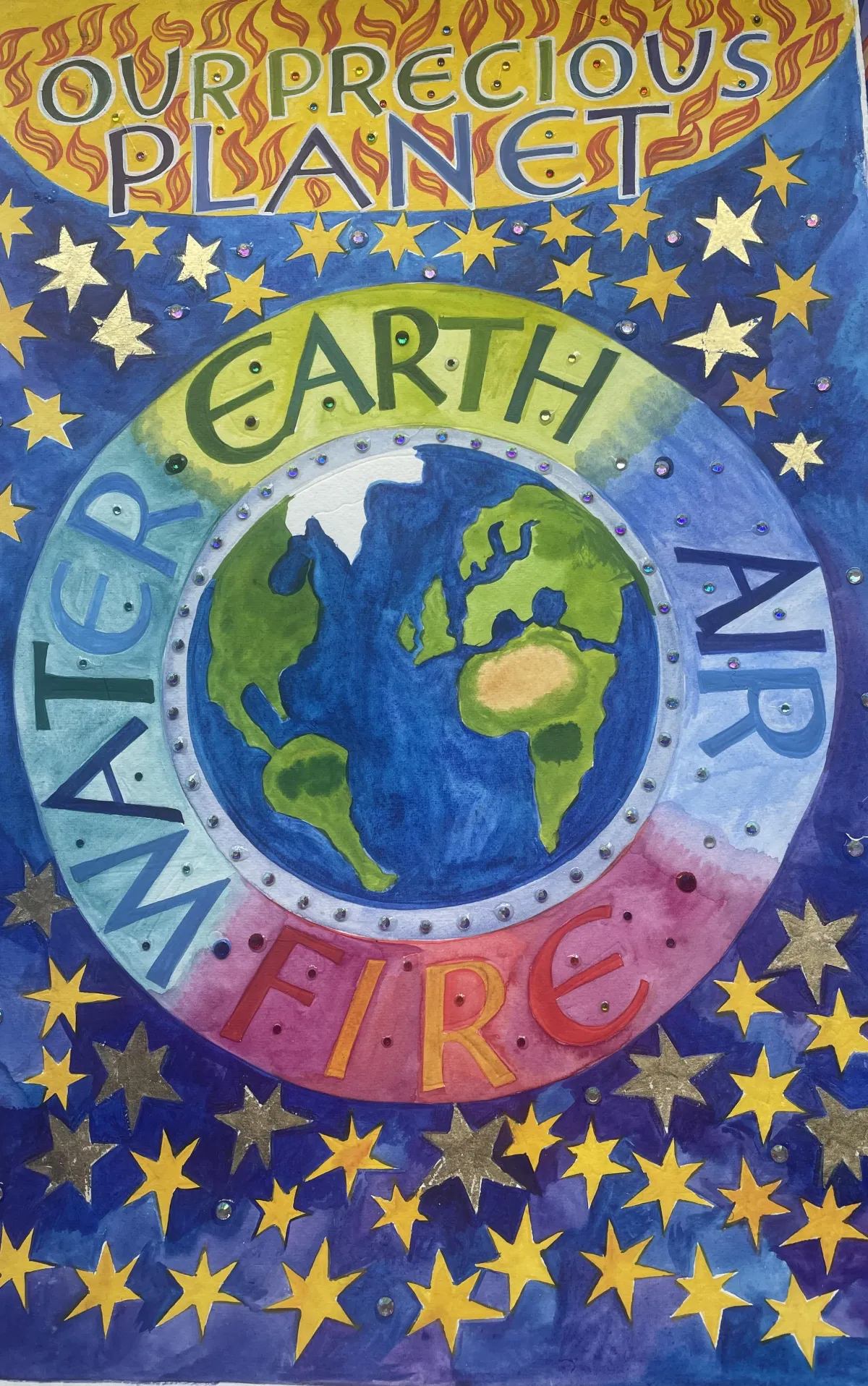
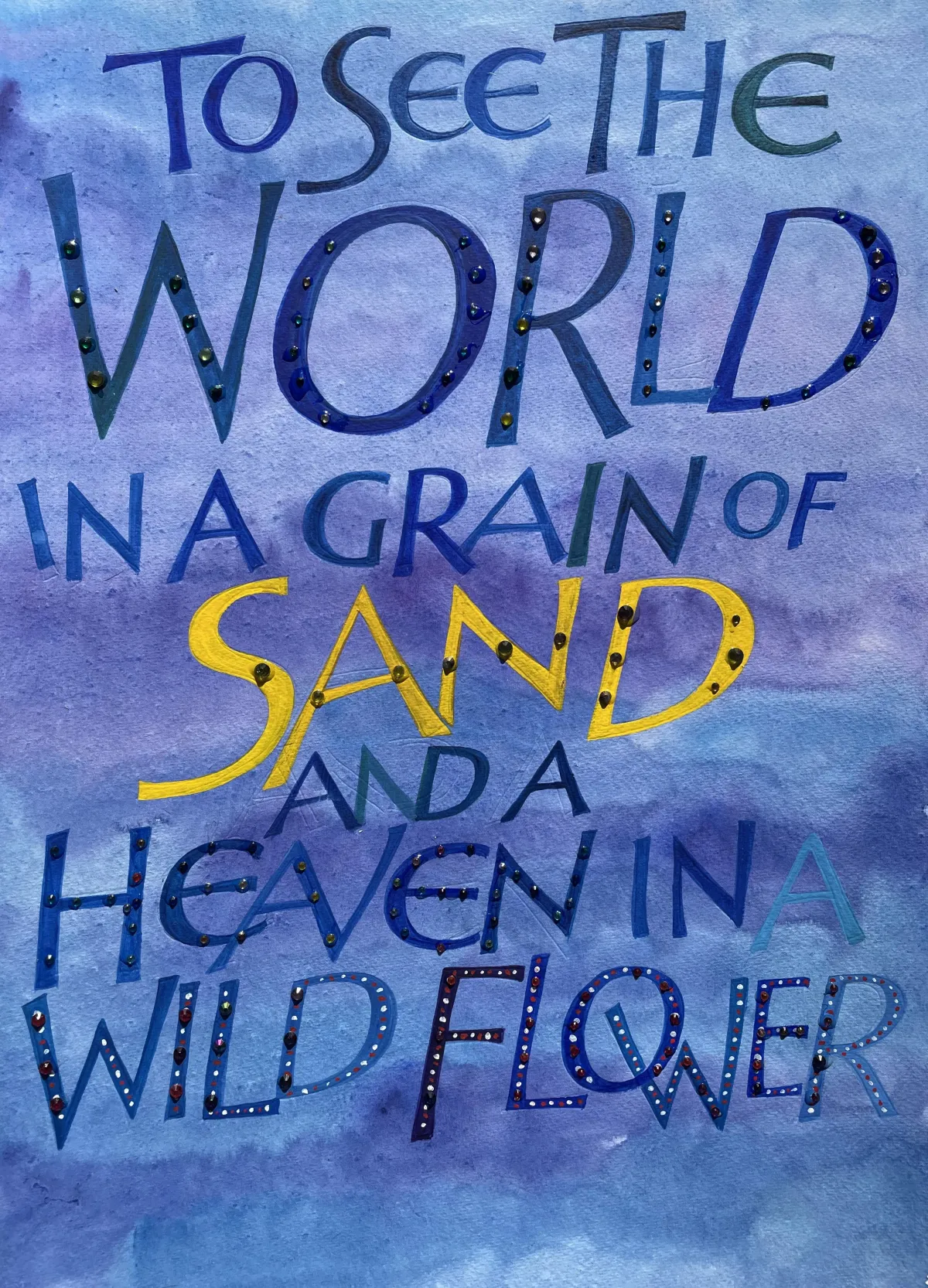

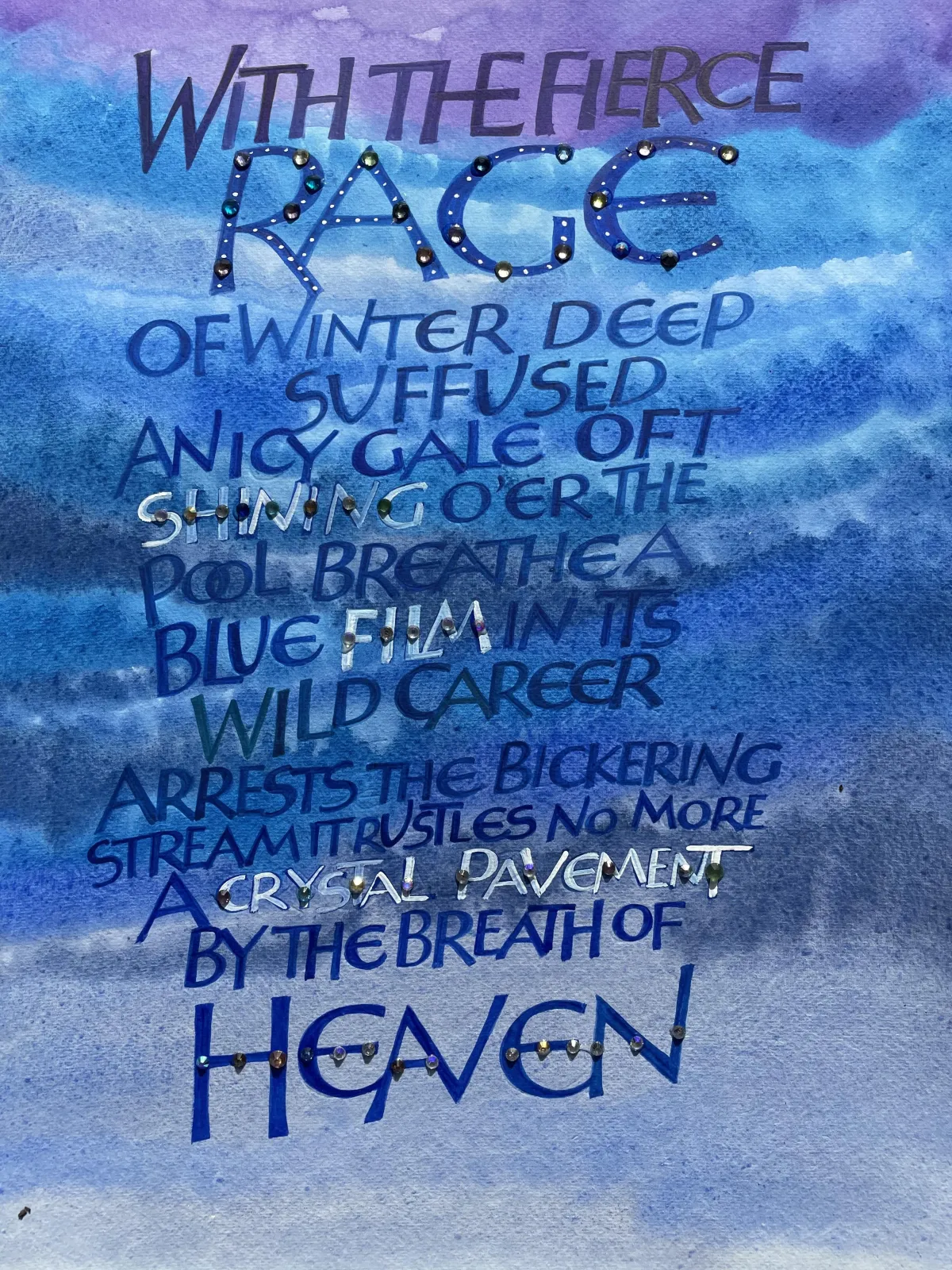
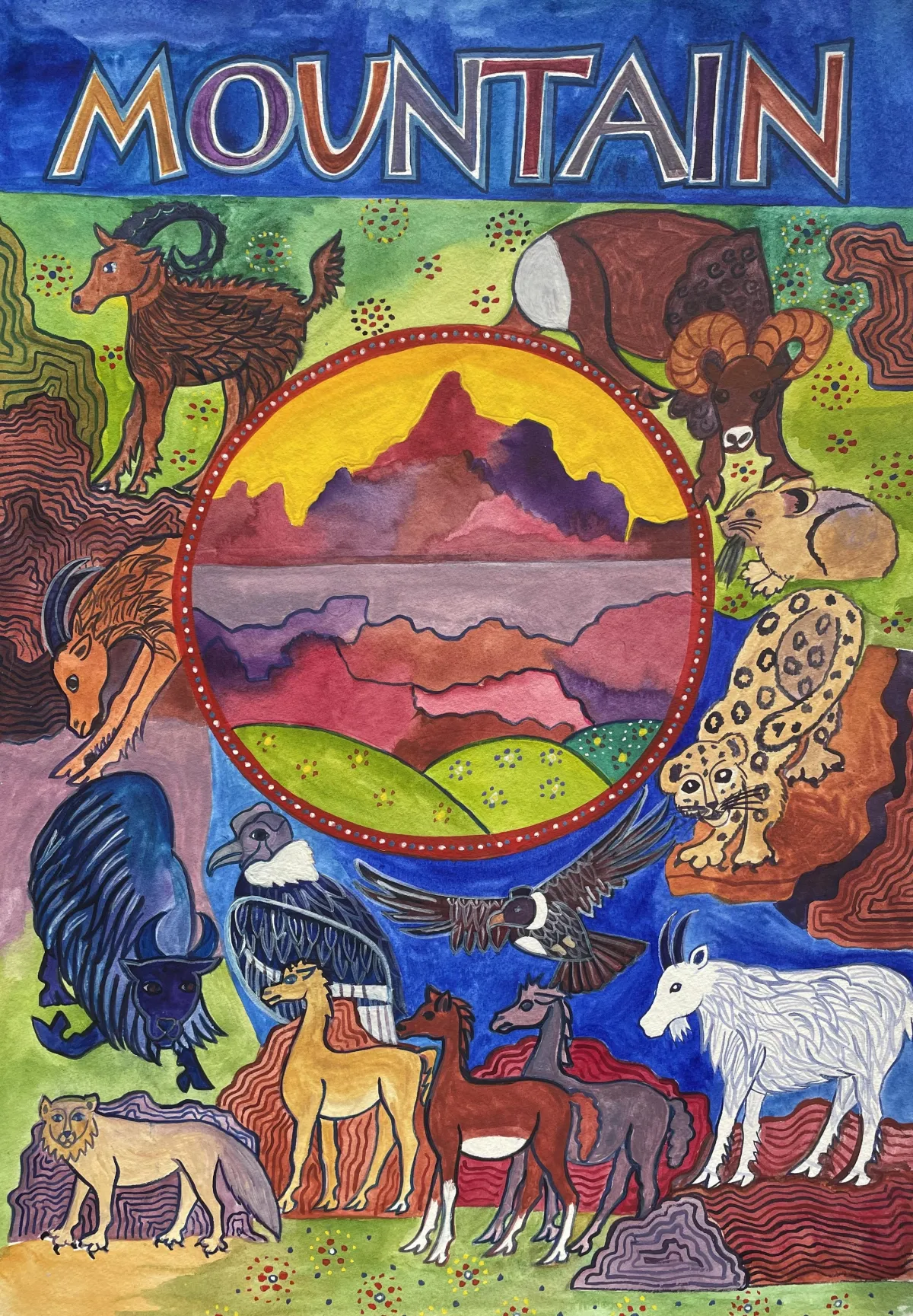
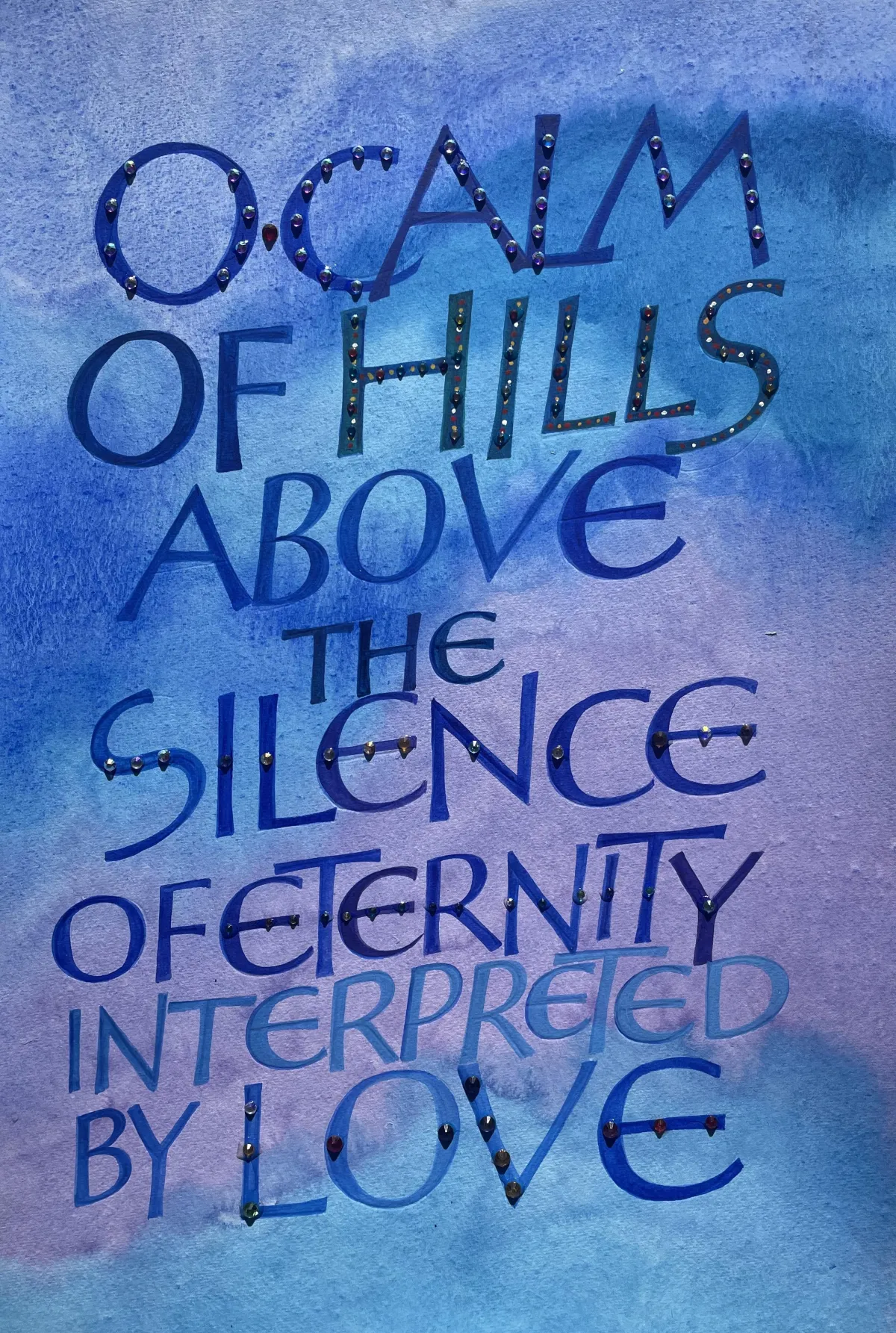
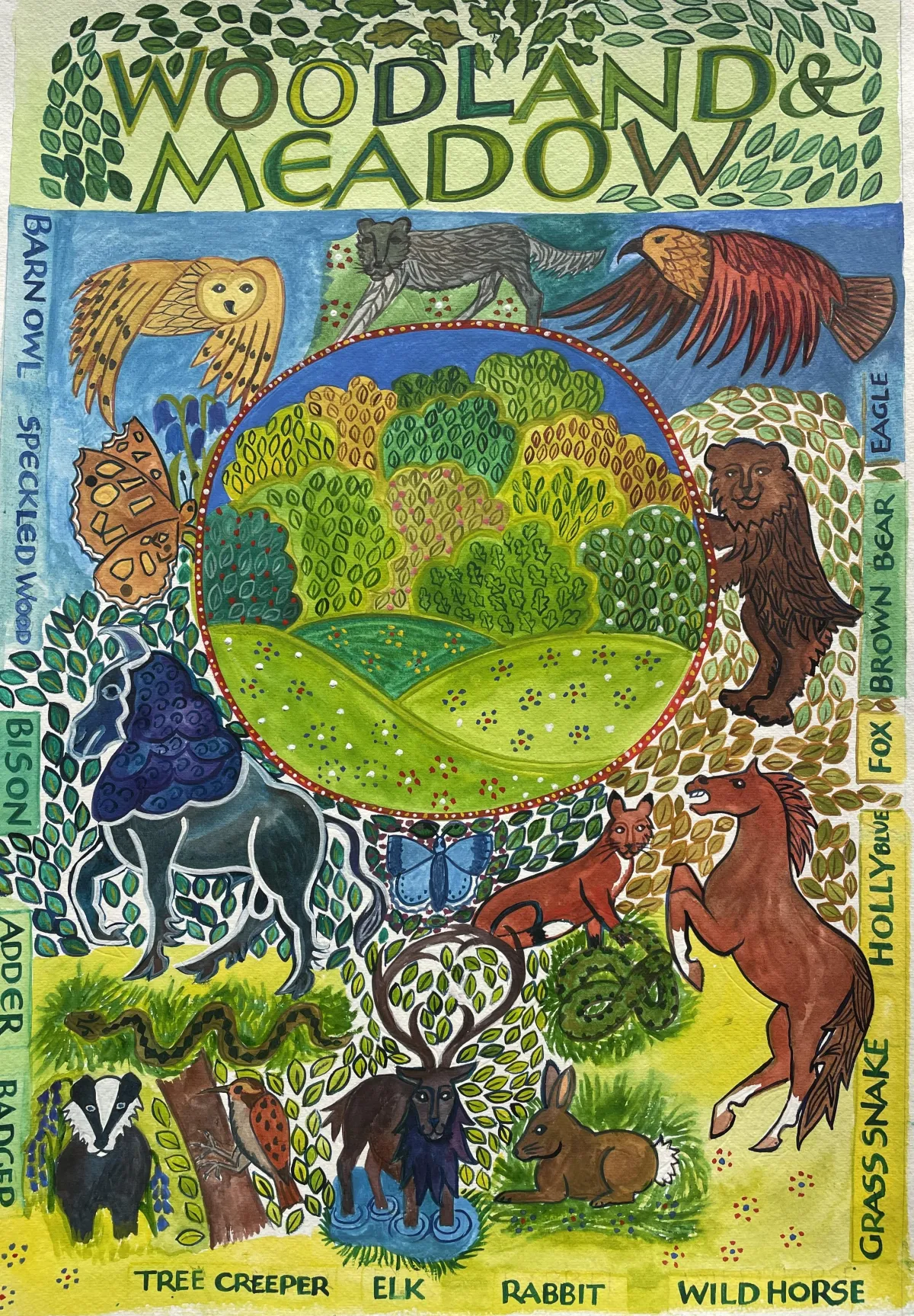
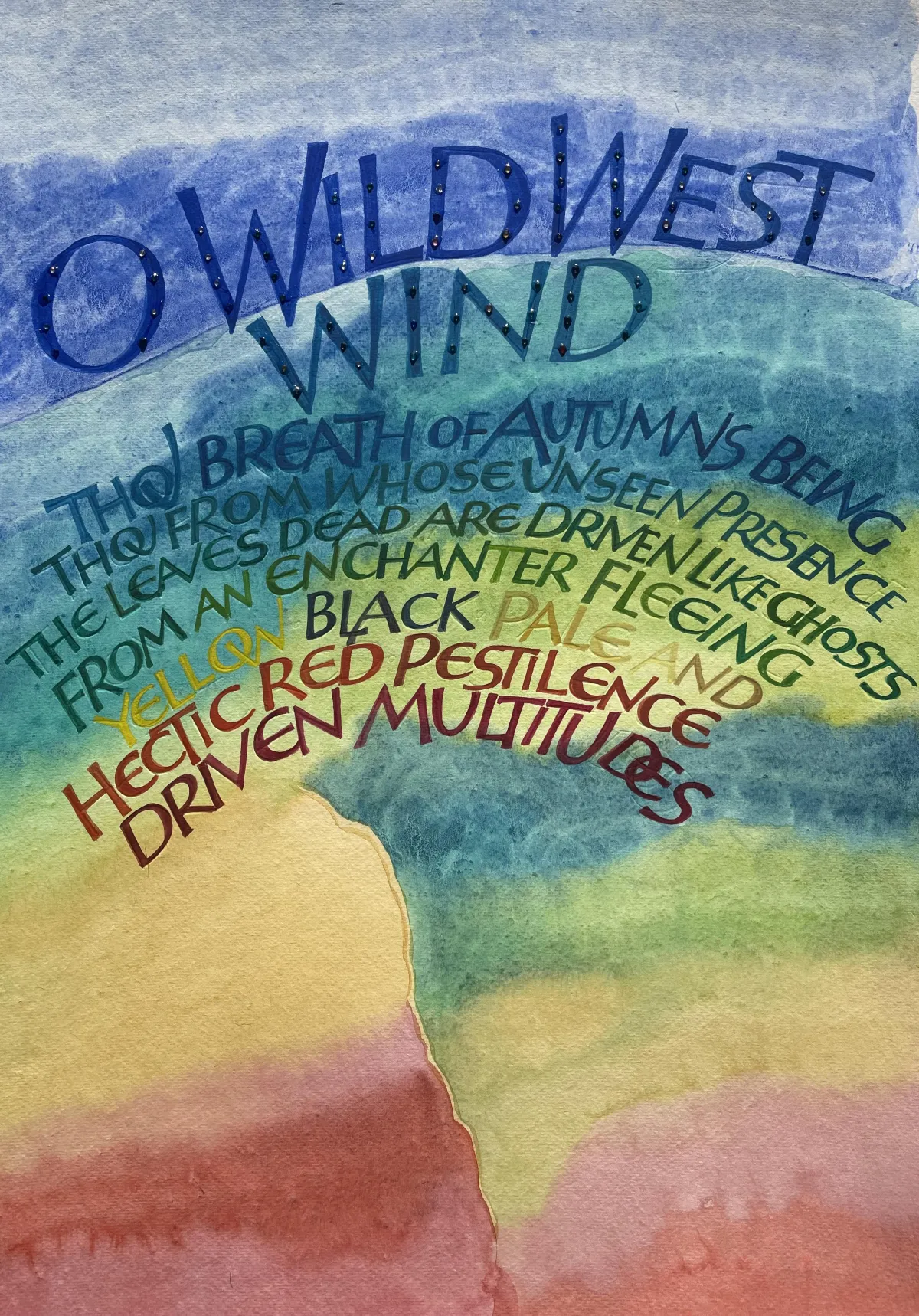
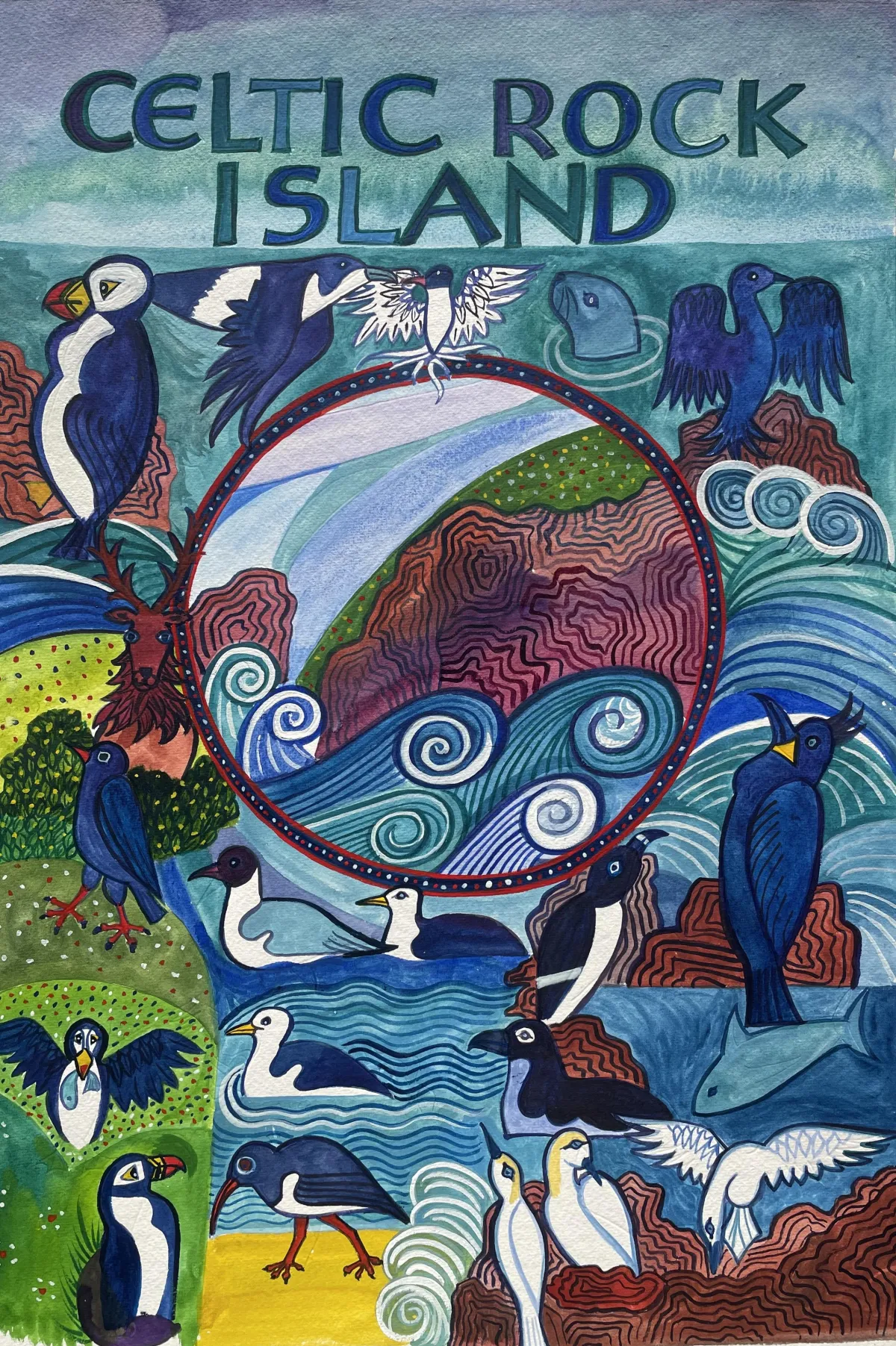
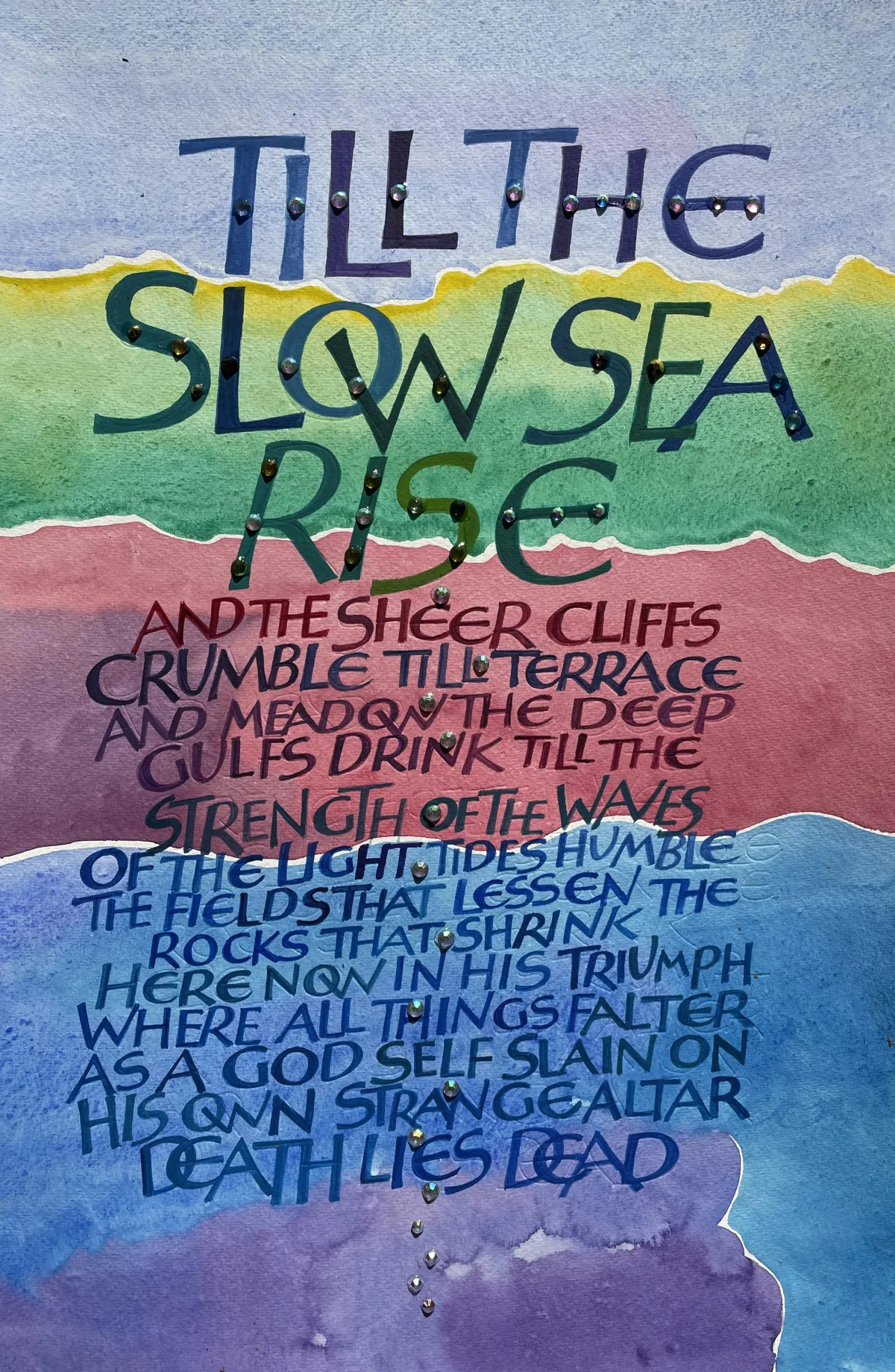
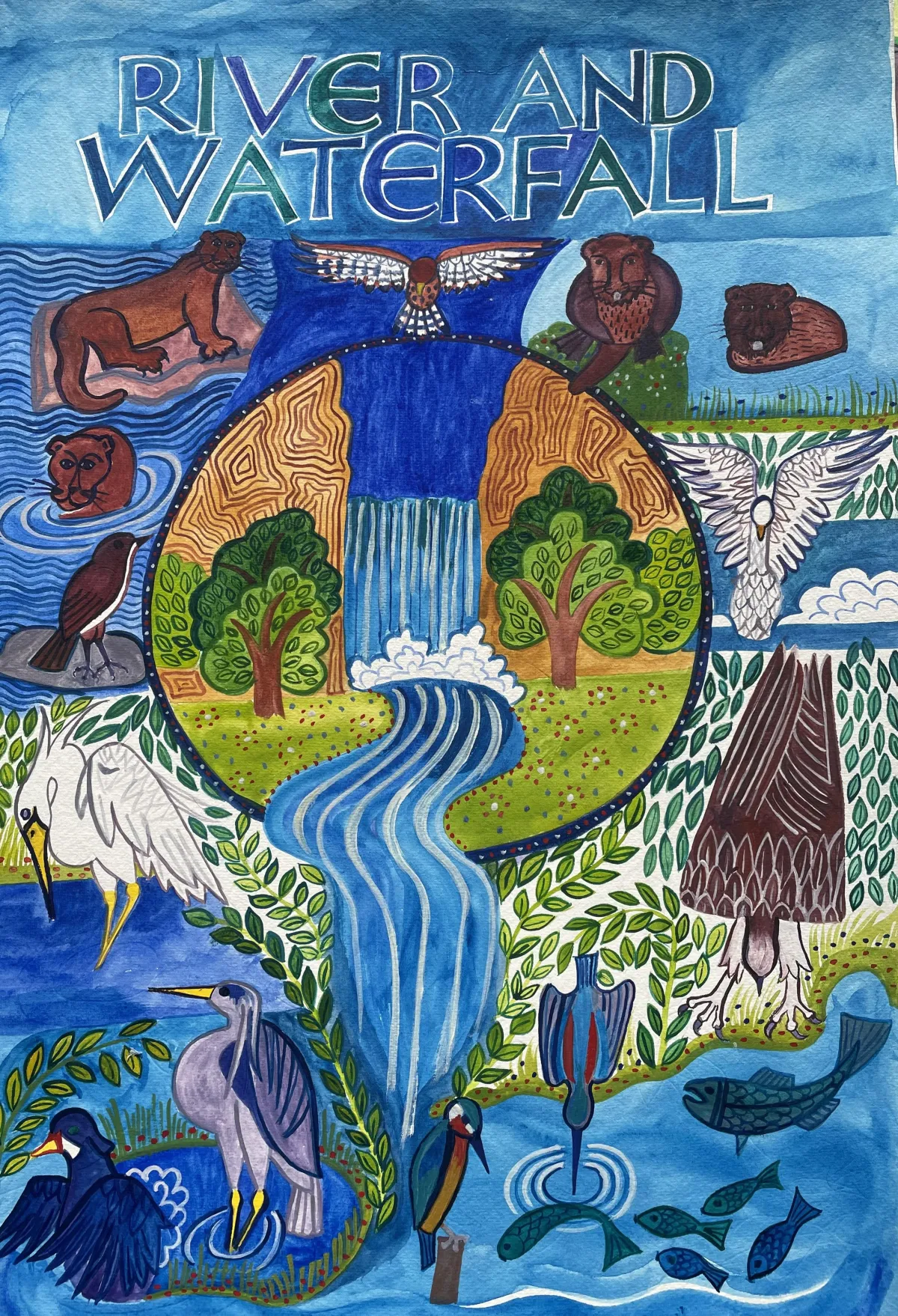
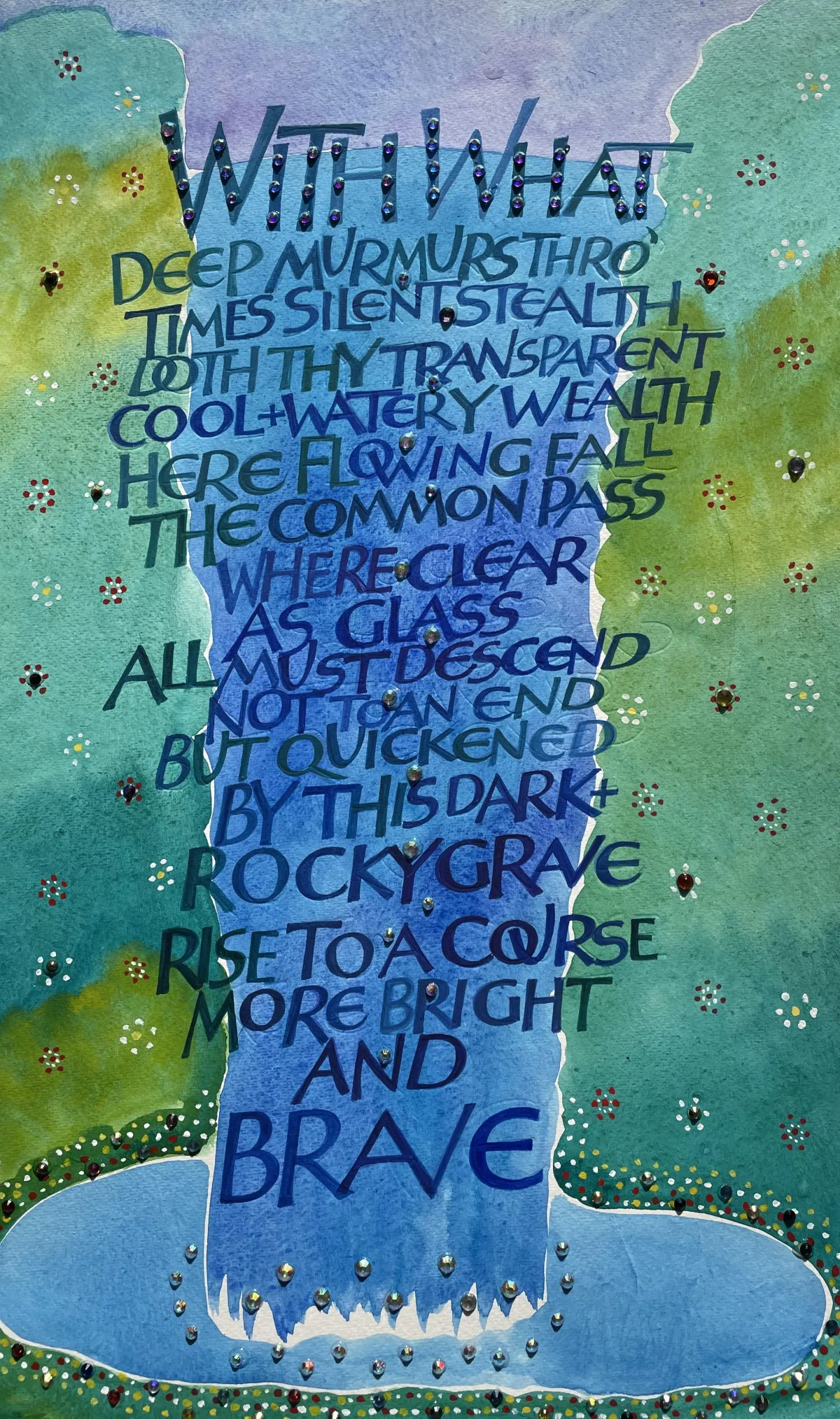
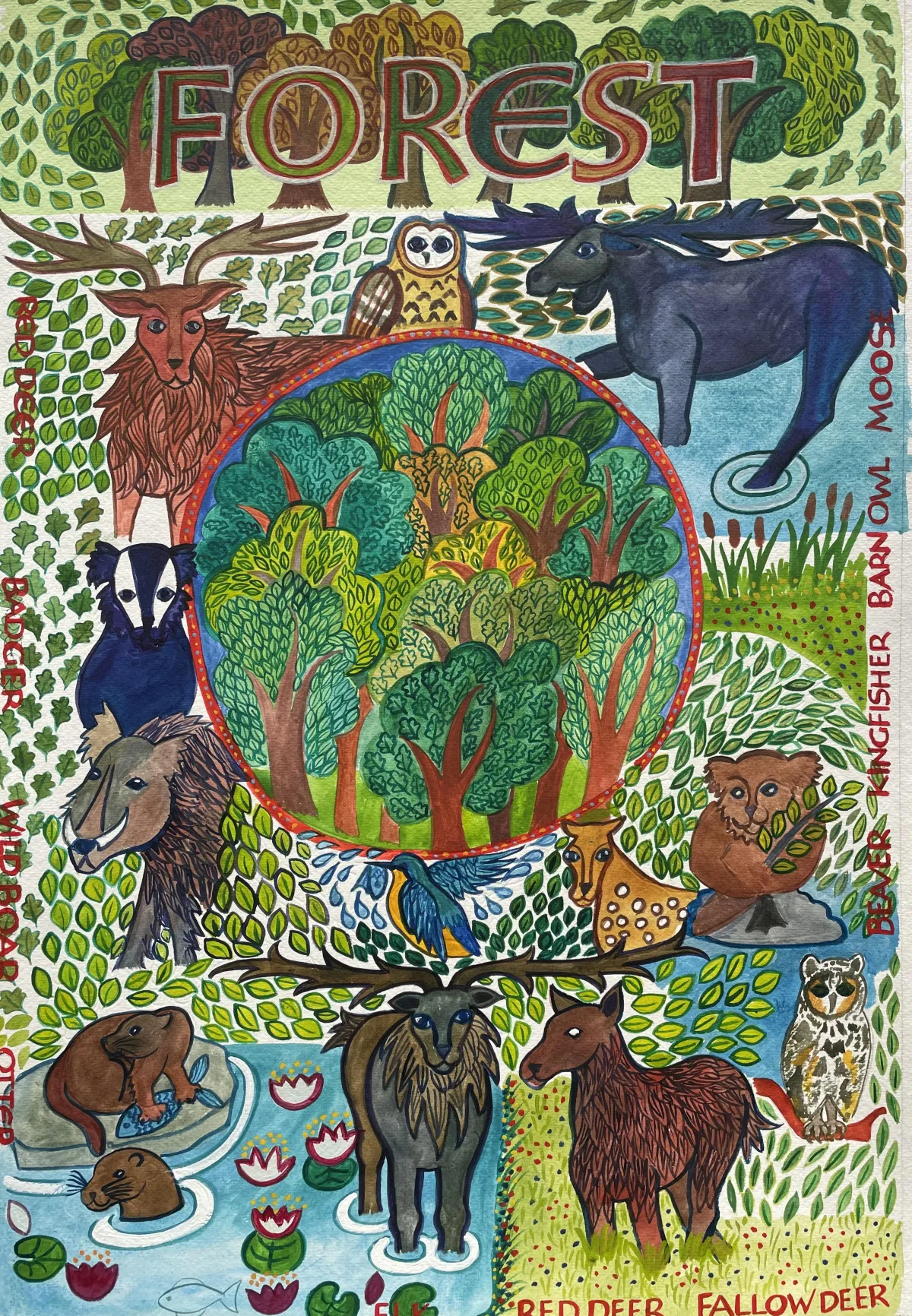
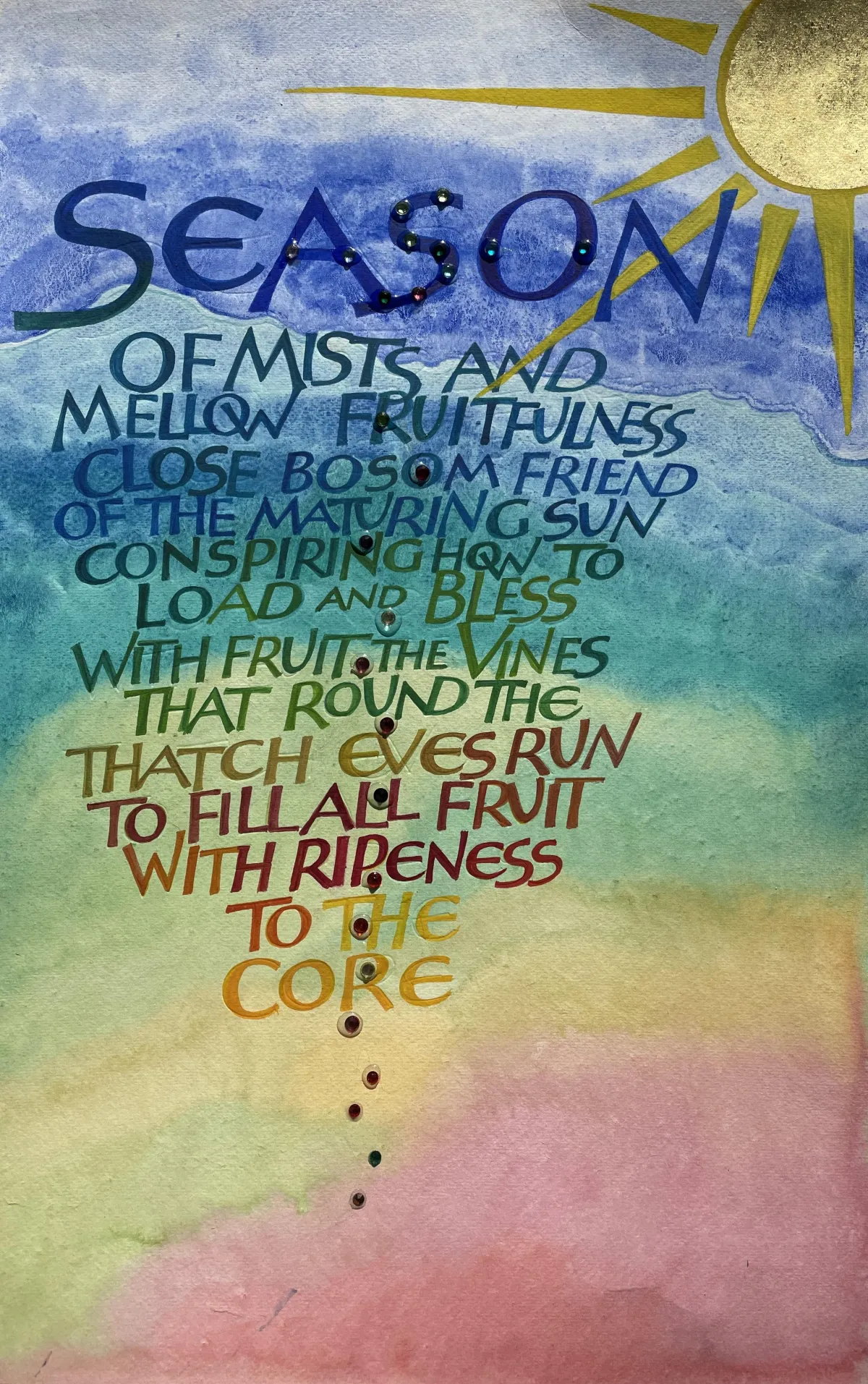

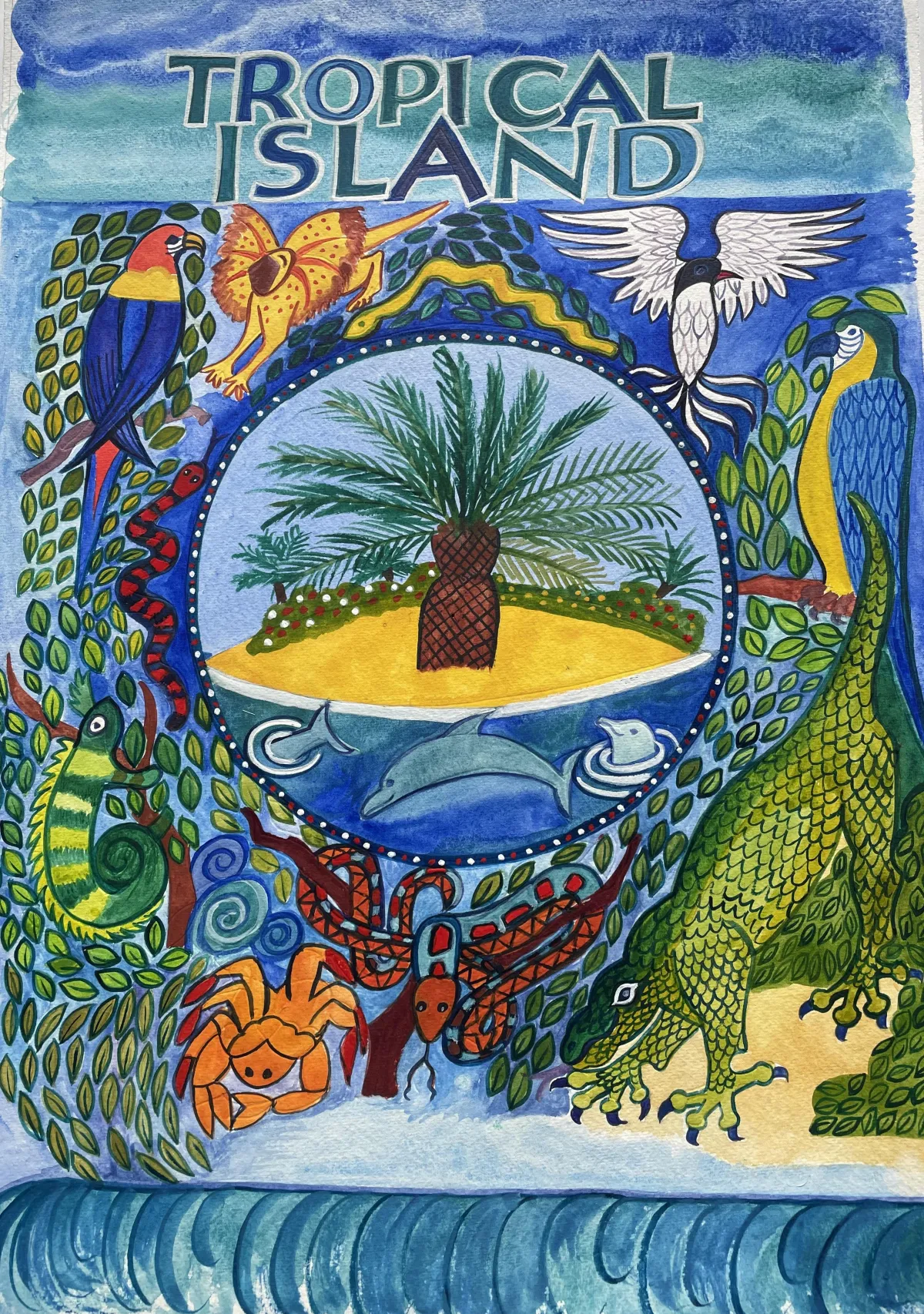
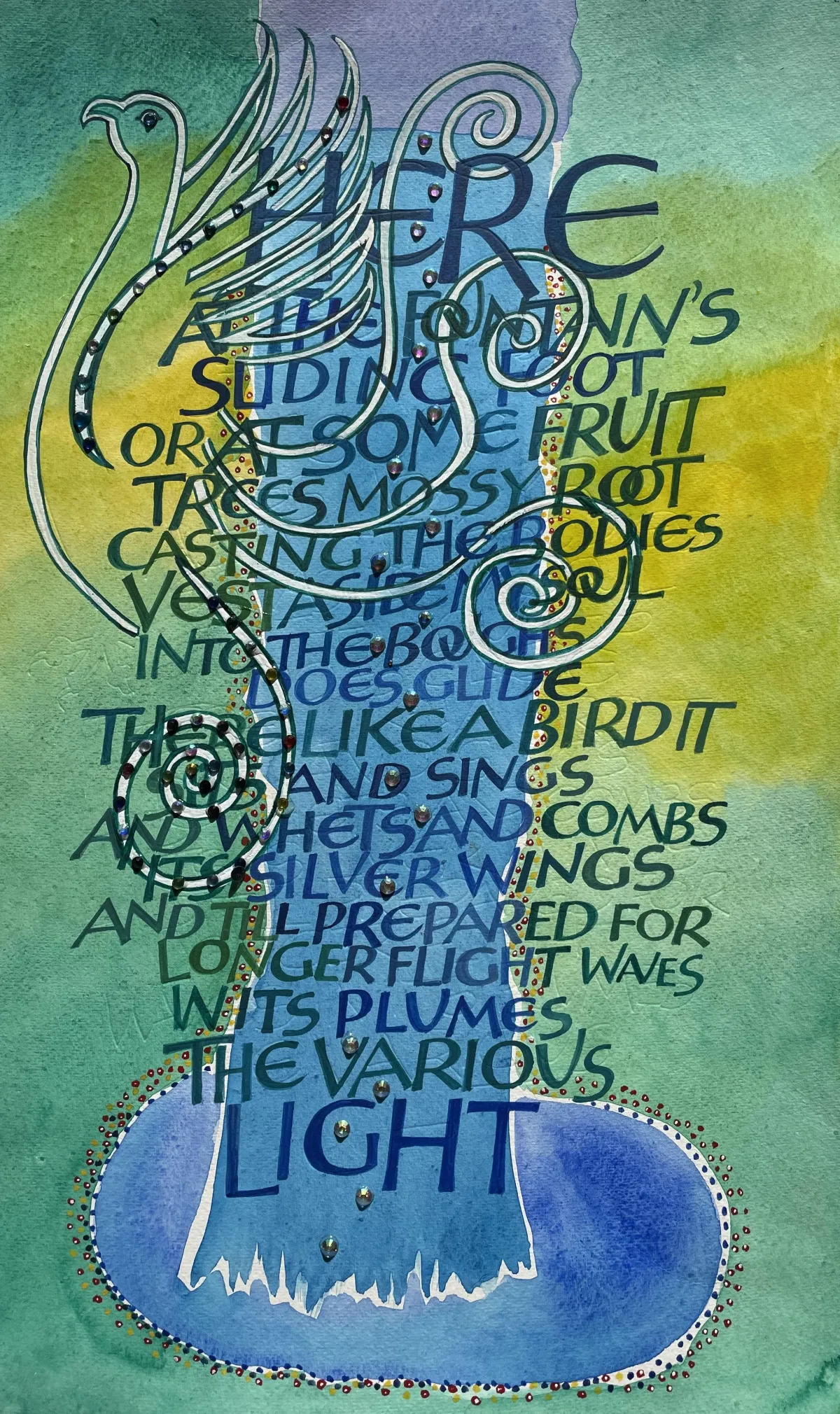
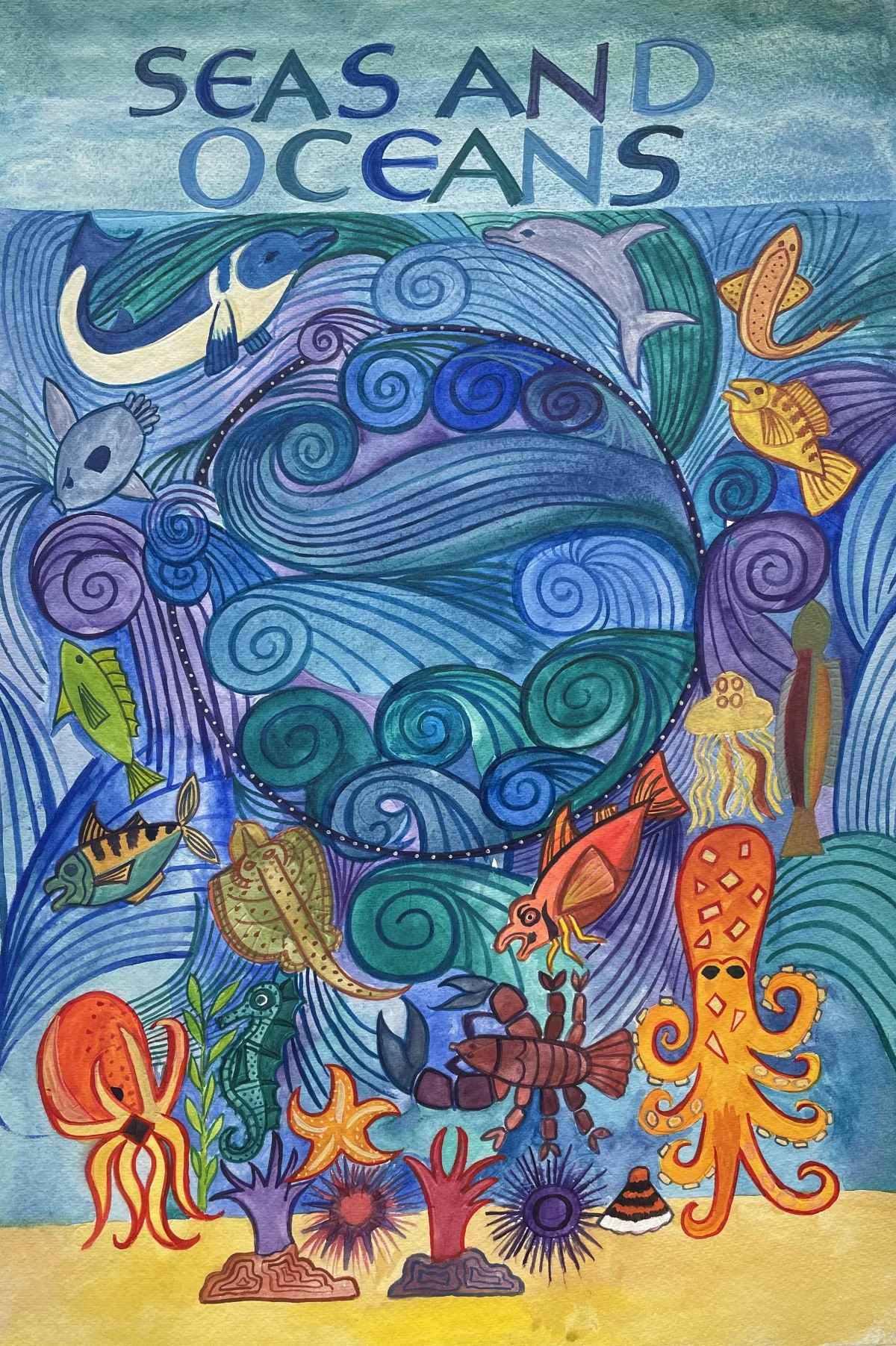
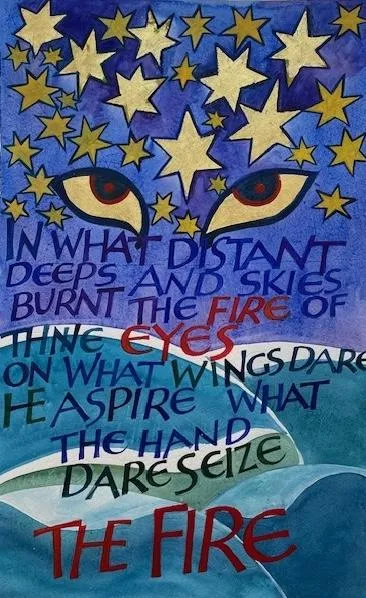

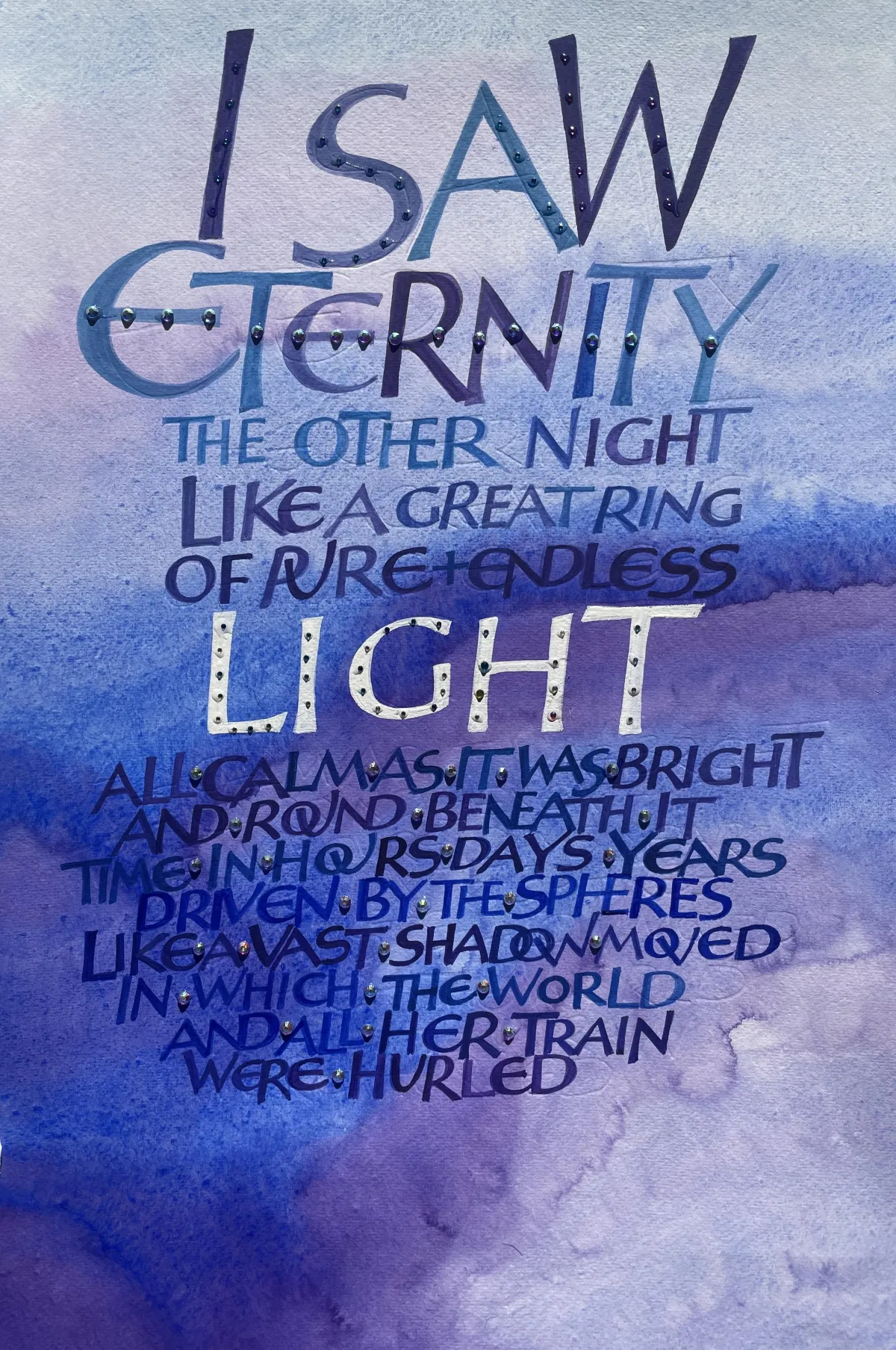
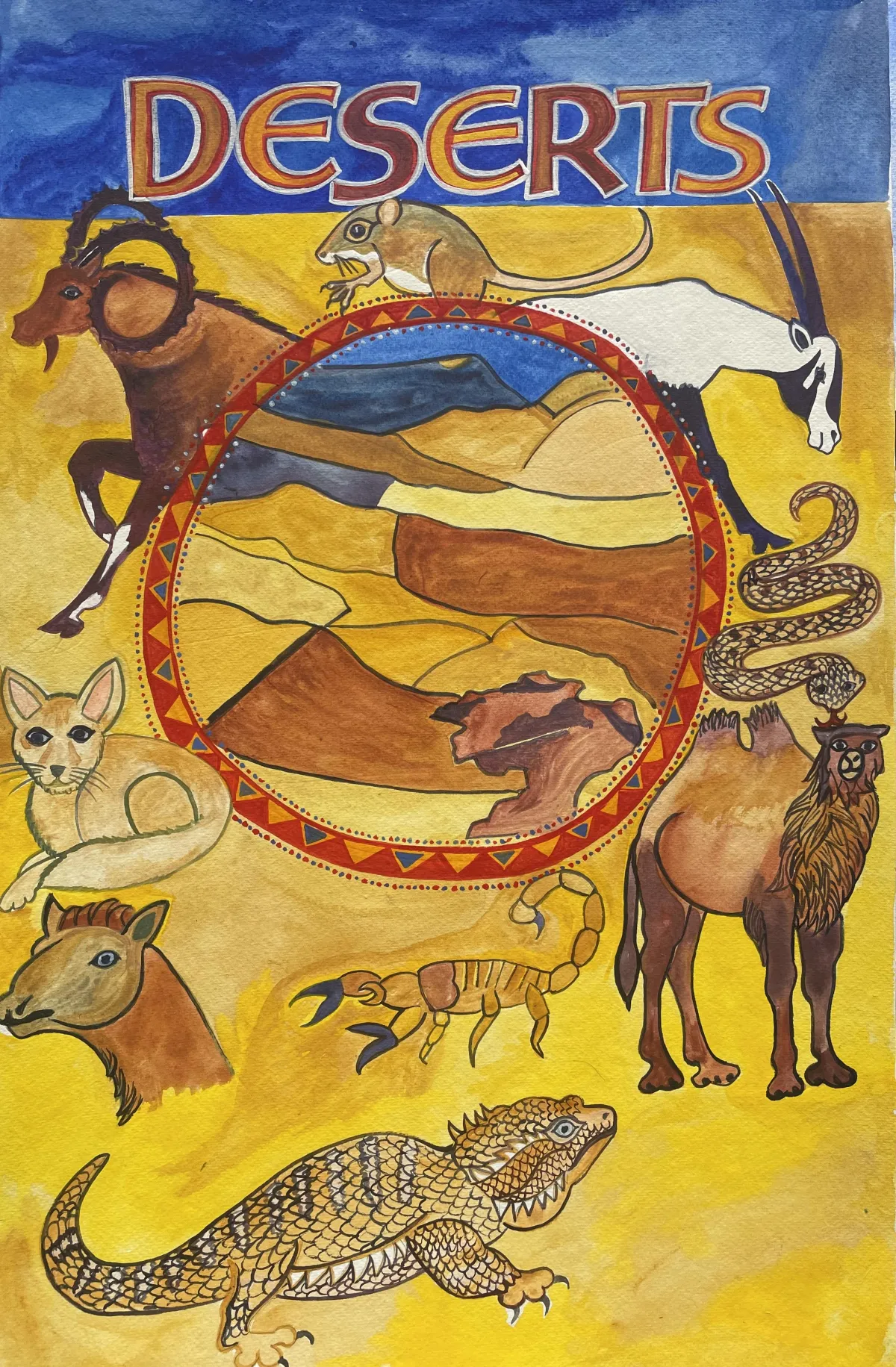
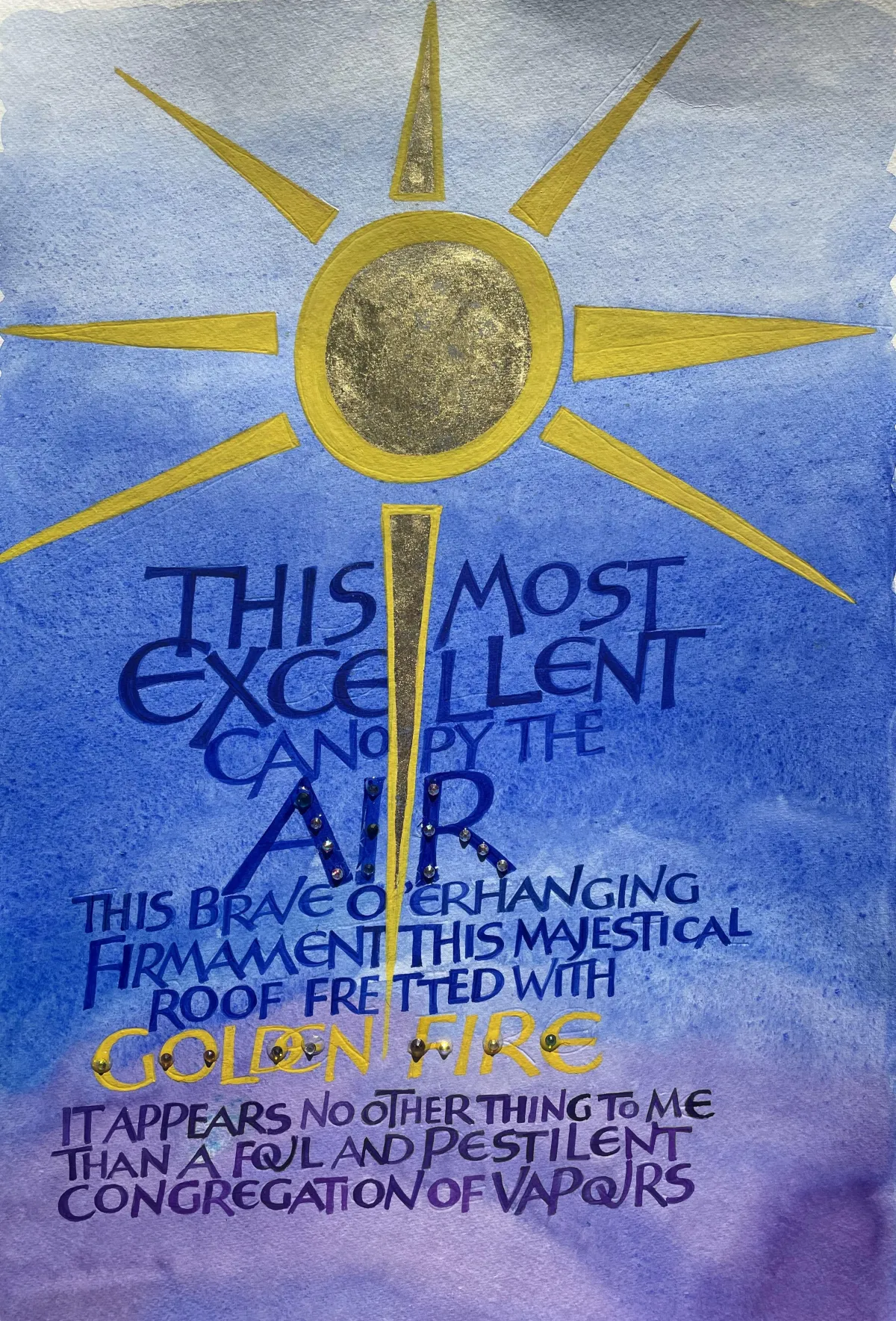
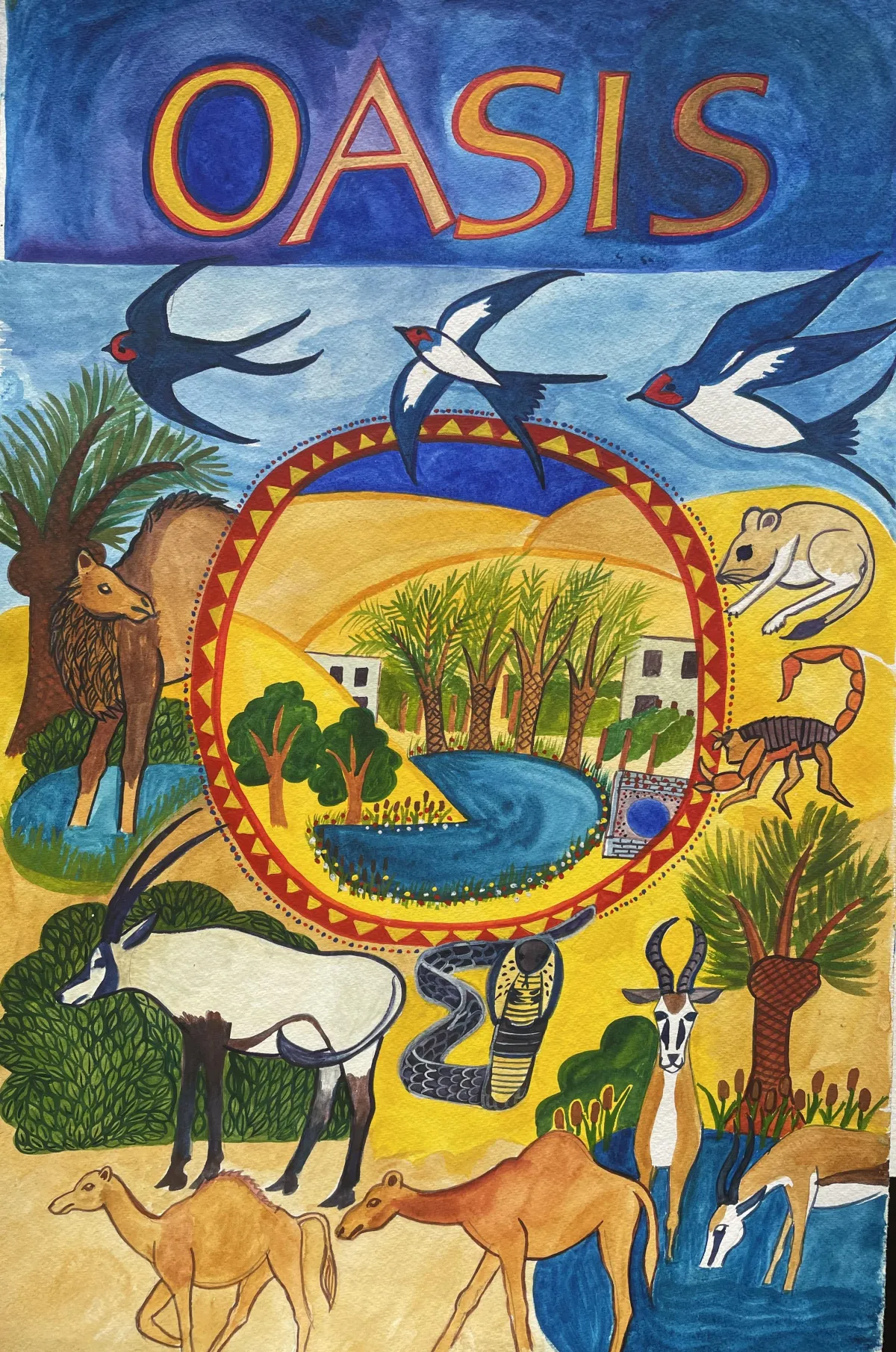
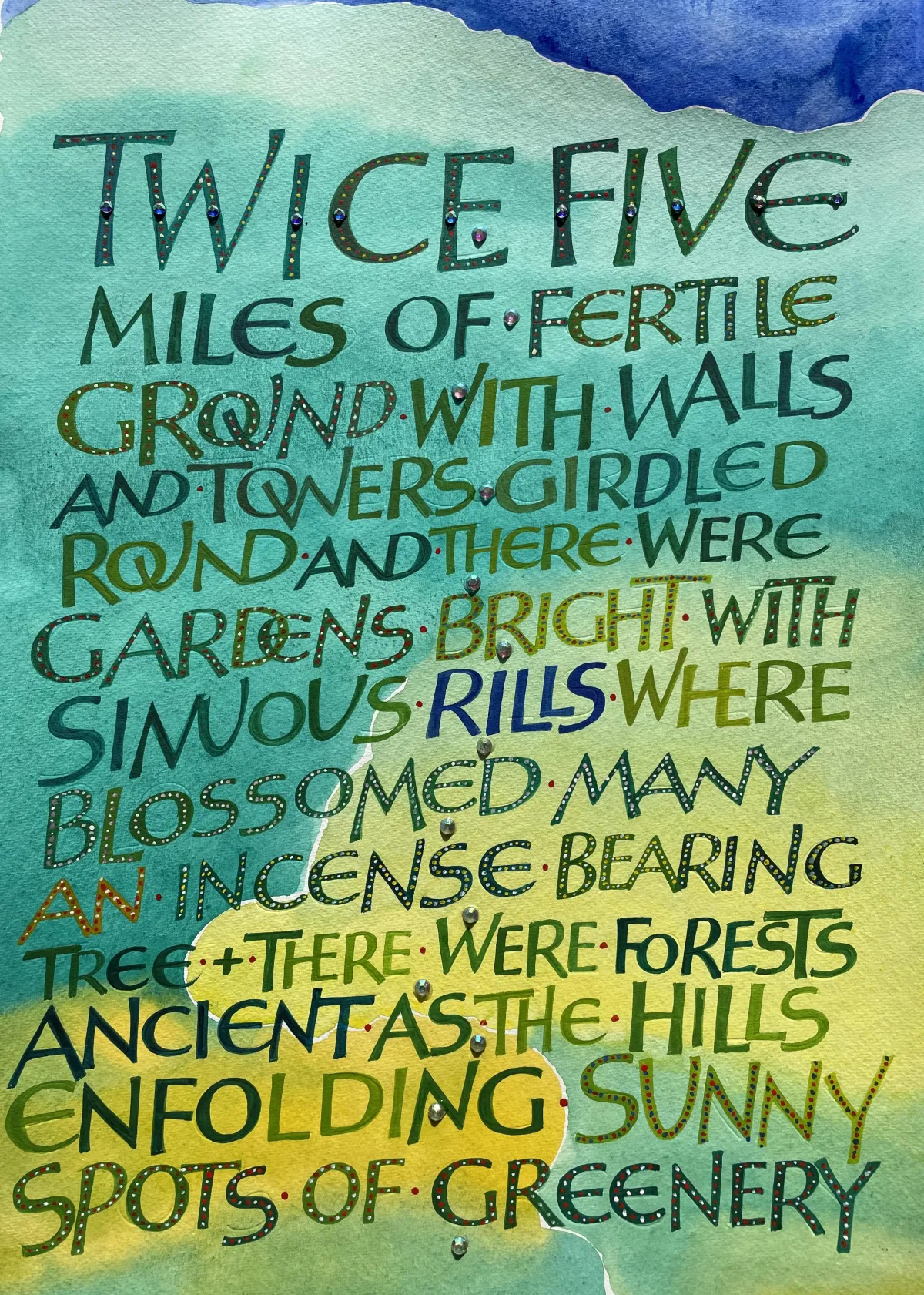

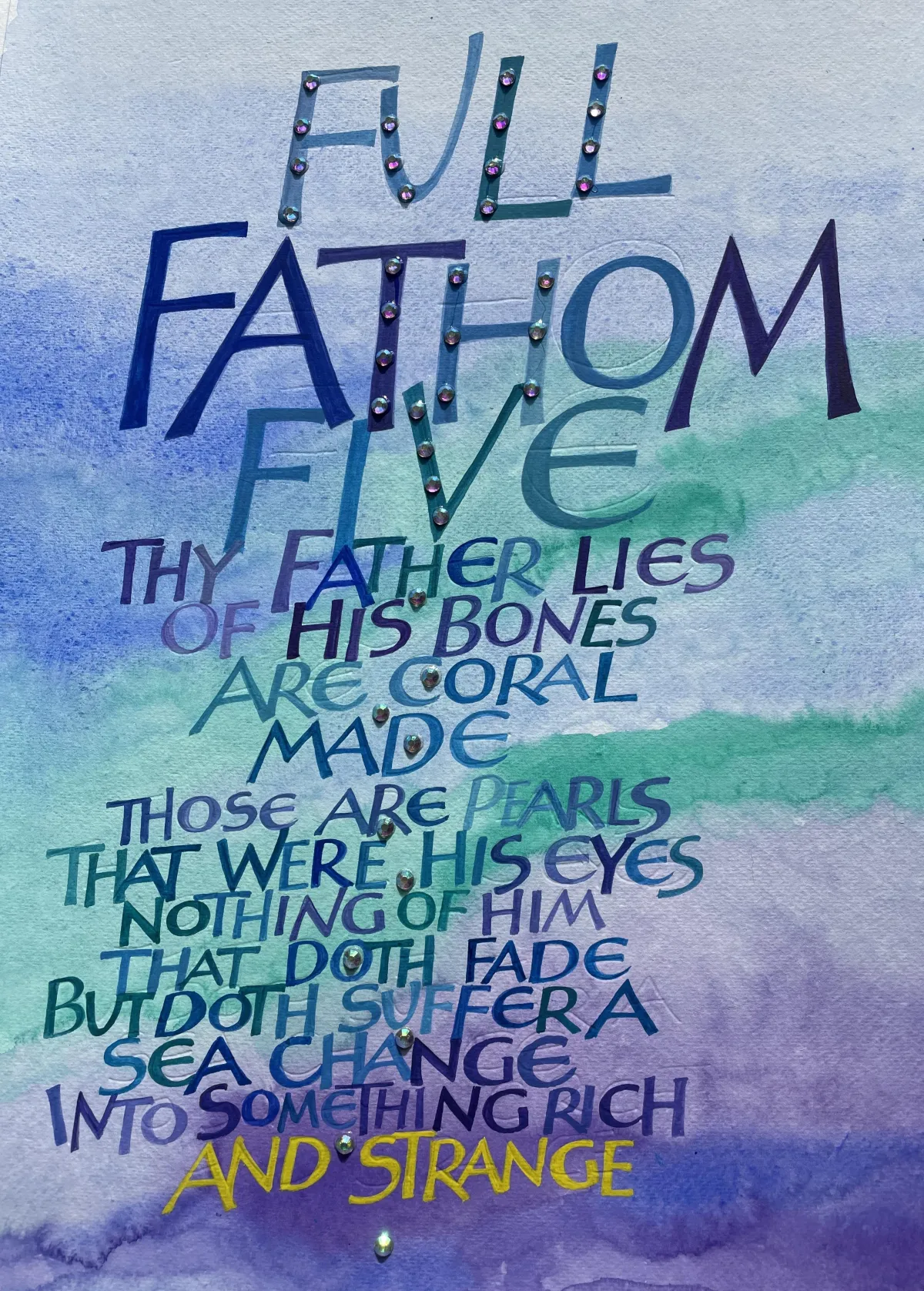
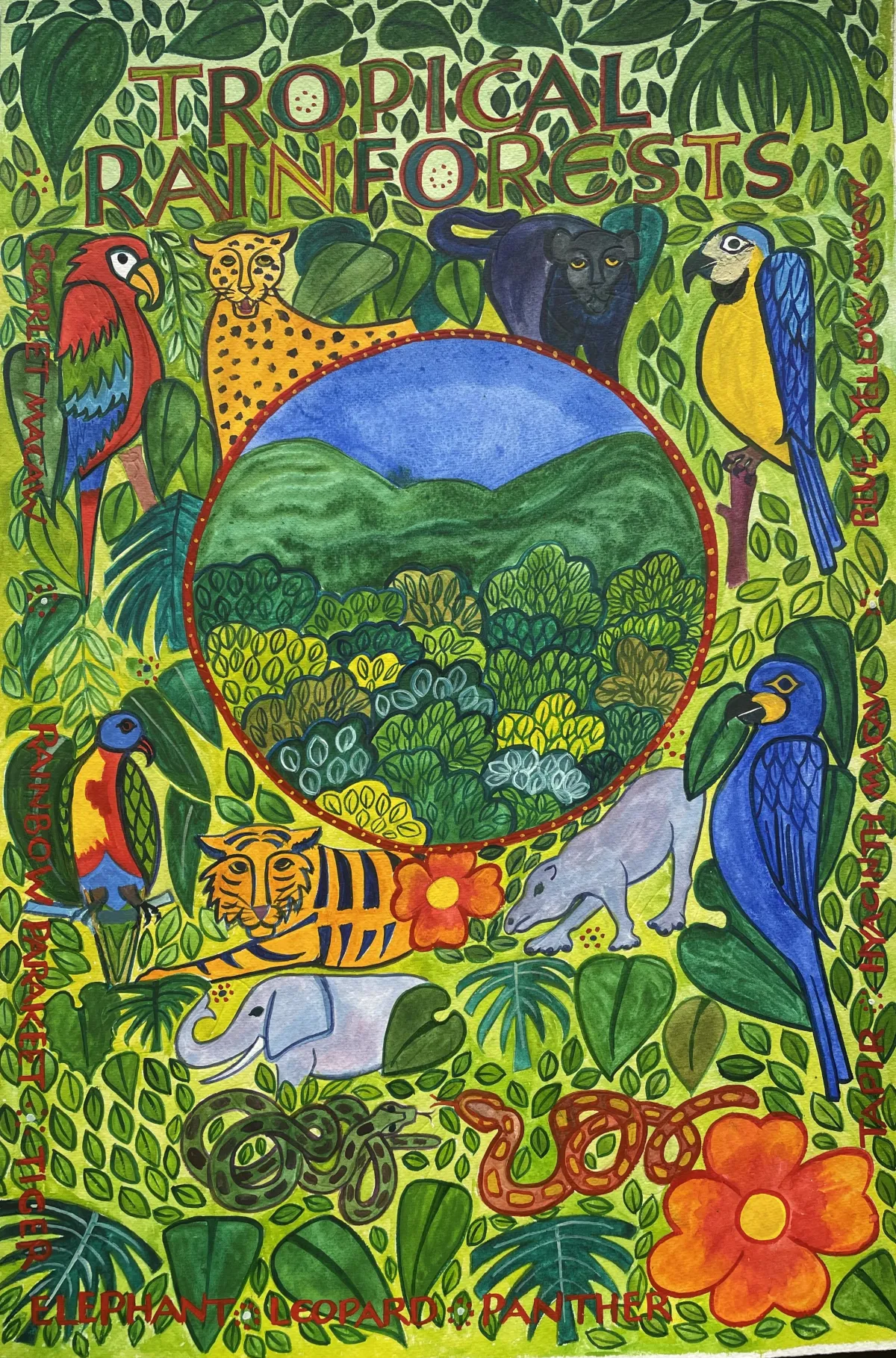
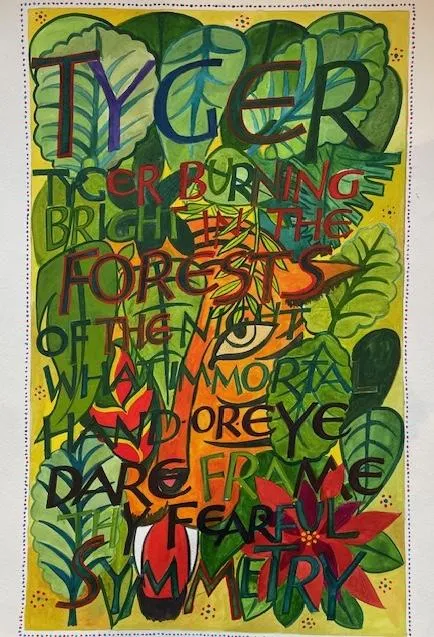
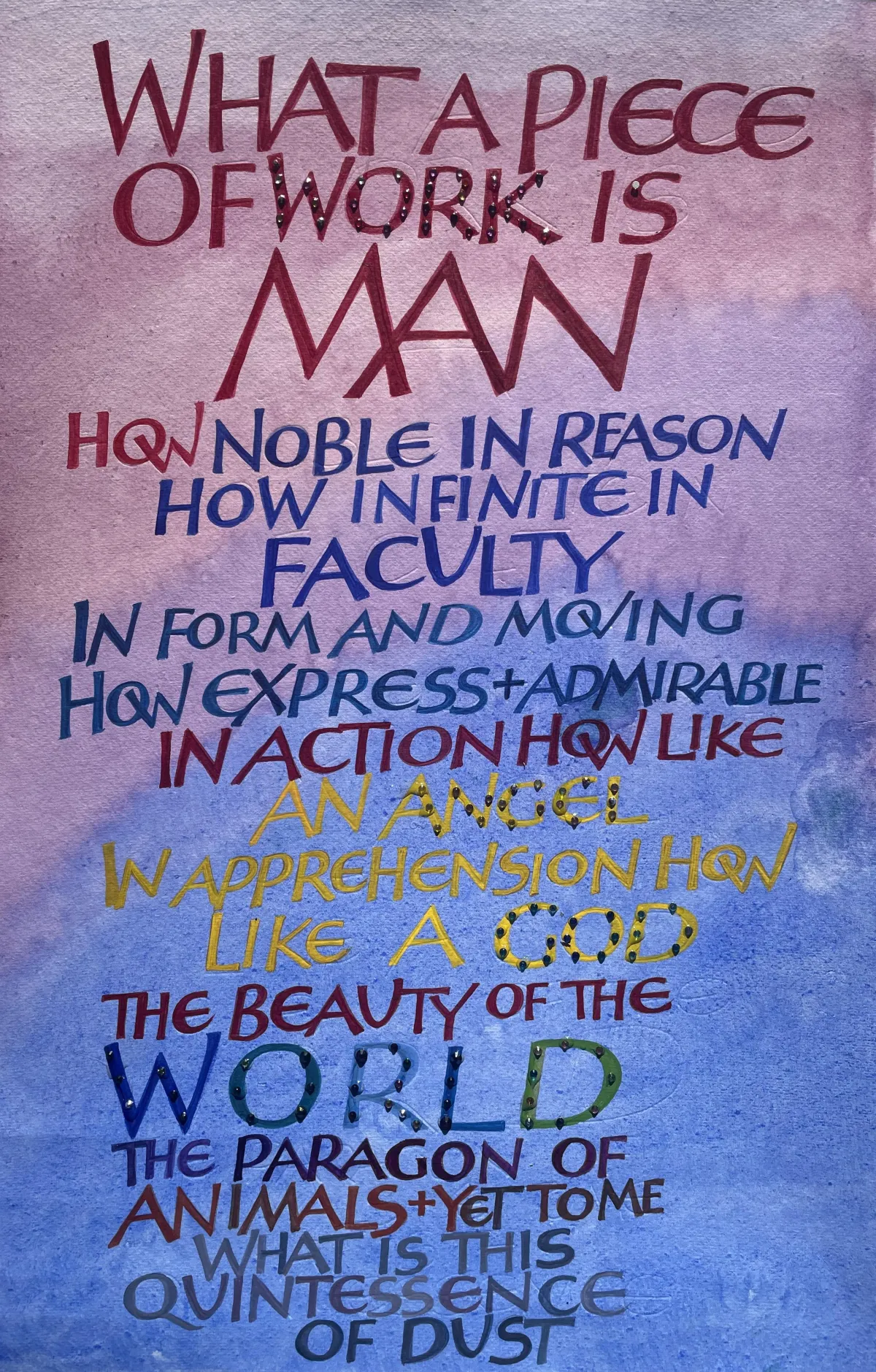
This series of pictures was inspired by a desire to combine various eco systems of the planet with poetry from various sources, to focus our minds creatively upon the state of our world.
The poetry is written on to water colour washes which create a colourful background to the lettering, reminiscent of the content of the words.
The illustrations are executed in water colour and create a detailed background to the various animals which are to be found in each bio sphere.
The illustrations call upon the style of medieval manuscript in their colour and layout. The forms of the animals are not minutely scientifically correct but are reminiscent of the style of a medieval scribe’s quirky personal interpretation.
The effect of the combination of illustration and poetic text is an invitation to the onlooker to enter a contemplative relationship with the subject which is presented from both a visual and an intellectual point of view as a result of the inclusion of the poetry.

Our Precious Planet
A view of the earth set in space and surrounded by stars, our precious blue planet with its delicate thread of atmosphere, set in the context of the cosmos.
To See the World
The piece of poetry which accompanies this is from William Blake - To see the world in a grain of sand.
Changing perspective from the macrocosm of the planet to the tiniest grain of sand invites us to stretch our imaginations through what we both see and read.


Ice Worlds
The cold of the frozen parts of our planet is evoked through the colours of ice, snow and sky. The image shows us the ice landscape, and the polar sea, under a polar sky. The landscape is filled with animals, birds and fish.
Fierce Rage of Winter
'Winters Rage' is from James Thomsons 'Seasons' 1726, paints a vivid picture in words .
'With the fierce rage of Winter deep suffused,
An icy gale, oft shifting, o’er the pool
Breathes a blue film, and in its wild-career
Arrests the bickering stream it rustles no more
A crystal pavement, by the breath of heaven.'


Mountain
The vivid colours of this piece recall some of the mountains of Australia and the US, whose rock forms are of amazing coloration. However the sunset can paint landscapes the most unexpected colours and that is hinted at here too.
The collage of mountain dwelling animals come from different parts of the globe but are all depicted in the biosphere of their mountain landscape.
O Calm of Hills Above
The poem which accompanies this piece comes from the great hymn 'O Lord and Father of mankind forgive our foolish ways' which was written by George Greenleaf Whittier, an American Quaker, and was published as a hymn in 1884.
The phrase written here “O Calm of hills Above” seems particularly relevant in the context of the mountain landscape and the presence of the vast rocky shapes which soar silently into the sky.


Woodland & Meadow
This piece concentrates on the edge of the woodland where in many countries fields nestle beneath the woods edge. Here wild ponies, bison, deer and elk, often roam, depending upon which continent the woodland occurs.
O Wild West Wind
These meadows often occur beside broadleaved woodlands and the poem from P.B. Shelley
Who lived at the very end of the 18th century
“O Wild west wind” vividly conjures up a sense of autumn in the broad leaved forest


Celtic Rock Island
Off the coast of West Wales there are countless islands which provide a home for nesting sea bird colonies. The rocks are of a variety of colours and are often draped with vivid gold lichen as a result of the clean air which races around their shores. A wide variety of sea birds make their home here including puffins, who enjoy the short clifftop grassland; ganets, cormorants and gulls, who nest on the precarious cliffs.
Till the Slow Sea Rise
The poem which accompanies this illustration is a quotation from the Victorian poet Algenon Swinburne who was born in 1861. This poem entitled 'The Forsaken Garden' presents us with a melancholic account of the encroaching sea and its effect in the erosion of the land, which goes well with the rock islands off the welsh coast.


River & Waterfall
The illustration of this habitat makes no attempt to realism. Rather the sky falls into the waterfall which in turn falls through the picture into the river and out of the bottom of the picture. Nevertheless this captures the interconnectedness of all being. The picture is filled with a variety of animals, birds and fish who inhabit this eco system.
With What Deep Murmurs
The poem which accompanies this piece is by the metaphysical poet Henry Vaughan (1621-1695) which seems to fore shadow the later Romantic artistic movement. Whilst he describes the falling of the water, Marvell also alludes to the process of life and death, and the transformation which this brings to us all. It makes a deep and spiritual accompaniment to the illustration of the habitat itself, emphasising the sacred nature of everything.


Forest
This illustration differs from the previous woodland piece by capturing life deep in the forest and the animals that thrive there. The thick overarching canopy of the trees conceals an ecosphere which contains large animals such as wild boar and deer, as well as water dwelling creatures, such as beaver.
Season of Mists
The poem which accompanies this is by John Keats 1795 - 1821 'Ode To Autumn'. It recalls the sheer abundance of the autumn landscape, rich with berries and fruits which sustain the animals who roam the woods.


Volcano
The vivid colours of this piece recall the frightening power and explosive might of the volcanic landscape in which no creatures can survive. The vivid reds and yellows, and the dark purple sky, riven with lightening, combine to create a vivid impression of the volcano's power in this illustration.
Speak Through the Earthquake
The poem which accompanies is this is another verse from the 'Dear Lord and Father of Mankind' hymn referred to earlier. On a blue and purple water colour wash, the words remind us that under all the tumultuous noise of our world there is always silence. We can be in touch with the 'Still small voice of calm', when we practice contemplation and sitting in silence.


Tropical Island
The illustration of this eco system is another collage of animals, reptiles, birds and vegetation, stitched together to form a colourful tapestry. In the foreground a wave crashes onto a sandy shore.
Here at the
Fountain's Sliding Foot
This poem is from Andrew Marvell’s 'Garden'. Marvell is a metaphysical poet whose description of a lyrical garden landscape and waterfall contemplates the soul, in the form of a bird with marvellous plumage. The metaphysical poets constantly move between the description of the outer world in all its glory and the contemplation of the inner world of the spirit.


Seas and Oceans
In this picture the wild waves of the ocean swirl and plunge above the still smooth sandy floor of the sea. A wide variety of fishes and creatures are depicted in all their colourful array. Above the waves a grey stormy sky is depicted in a watercolour wash which describes the wind of the approaching hurricane.
In What Distant Deeps
The poem which accompanies this piece is taken from William Blake’s poem 'The Tyger'. William Blake lived from 1757-1827 at the start of the Industrial Revolution. He witnessed the building of factories and the pain and sorrow which this brought with it. The poem depicts the pain for the artist of the creative process. In this verse he likens creation to the raging waves of the sea and its power, and it makes an interesting counterpoint to the illustration of the creatures of our seas.


Savannah
The tawny landscape of the African grasslands is illustrated in this picture. The purple mountain in the distance under the wide arching blue of the African sky provides a backdrop to the rolling grassland which is home to a rich variety of wildlife.
I Saw Eternity the Other Night
The poem which goes with this landscape is from Henry Vaughan’s 'The World'. The endless grasslands of the African plains and the wide open dark skies filled with stars at night give us a glimpse of the universe which surrounds us. The Savanna helps us to see the outer form of apparent infinity whilst, Vaughan’s vision of seeing Eternity as a ring of pure and endless light is an inner seeing which we perceive with the eyes of our heart.


Deserts
The landscape of multi coloured rolling dunes and rocks in the centre of the picture create a vivid image of the desert world. The animals which inhabit the eco sphere surround the landscape in all their camouflaged detail.
This Most Excellent
Canopy of Air
Shakespeare describes the sky and the sun: 'This brave, o'erhanging firmament, this majestical roof fretted with golden fire', giving us a whole new dimension to our visualisation of the hot desert landscapes of our world.


Oasis
The desert landscape hides a secret. Nestled between the dunes lies a life giving pool, with a village beside it, surrounded by fields of crops, vines and date palms. The lush abundance of the water in the desert is a vivid example of life's tenacity.
Twice Five Miles
ST Coleridge's, 'Kubla Khan a Vision of a dream', begins
“In Xanadu did Kubla Khan a stately pleasure dome decree where Alph the sacred river ran through caverns measureless to man down to a sunless sea.”
creating an image of an exotic desert oasis, surrounded by walls and towers, enclosing sunny spots of greenery.


Coral Sea Island
The delicate, fragile eco sphere of the coral islands of our world are at the fore front of climate change. The rising sea temperatures are causing the bleaching of coral reefs and destructive over fishing is threatening the food supplies of coral islanders and rendering the islands uninhabitable.
Full Fathom Five
Shakespeare's 'Full Fathom Five' gives us another inner view of the transformation which is death, and decay of the outer form, into something rich and strange.


Tropical Rainforests
This is one of the richest eco spheres on the planet. Parts of the Amazon rainforest contain uncontacted tribes and species of plants and animals as yet unknow to science. Vast tracts of rainforest world wide have been felled for their valuable timber crops of hard wood and to clear ground to create grazing for cattle. The soil of the rainforest is an intricate part of the whole structure of the bio sphere. When stripped of the canopy covering, it soon degrades from rough grassland to desert.
Tyger
The combination of the leaves and flowers of the undergrowth and the lettering of the poem combine to conceal the Tyger from us. All we can see is his golden eye staring out at us.


What a Piece of Work is Man
Taken from Shakespeare this piece offers us a vivid description of the highest attributes of humanity. Shakespeare raises man almost to the level of a God, before dashing him down
“The beauty of the world the paragon of animals and yet to me what is this
quintessence of dust”
Shop
Any design you see on the site can be purchased online on request
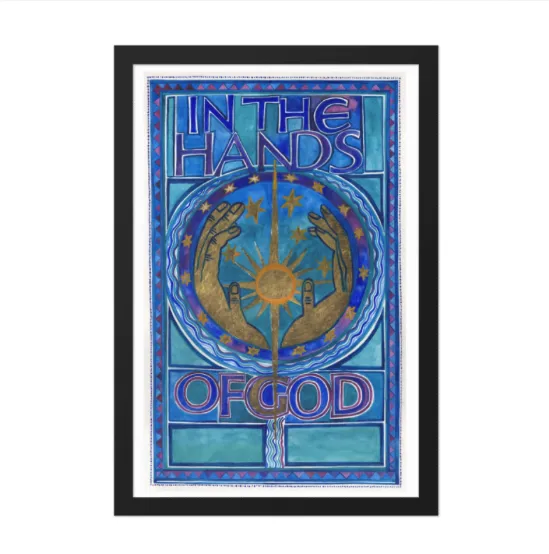
Framed Prints
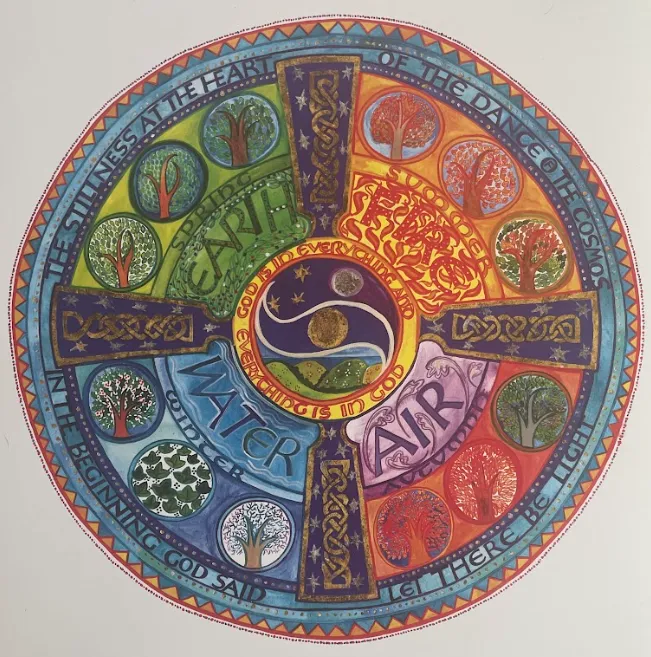
Cards
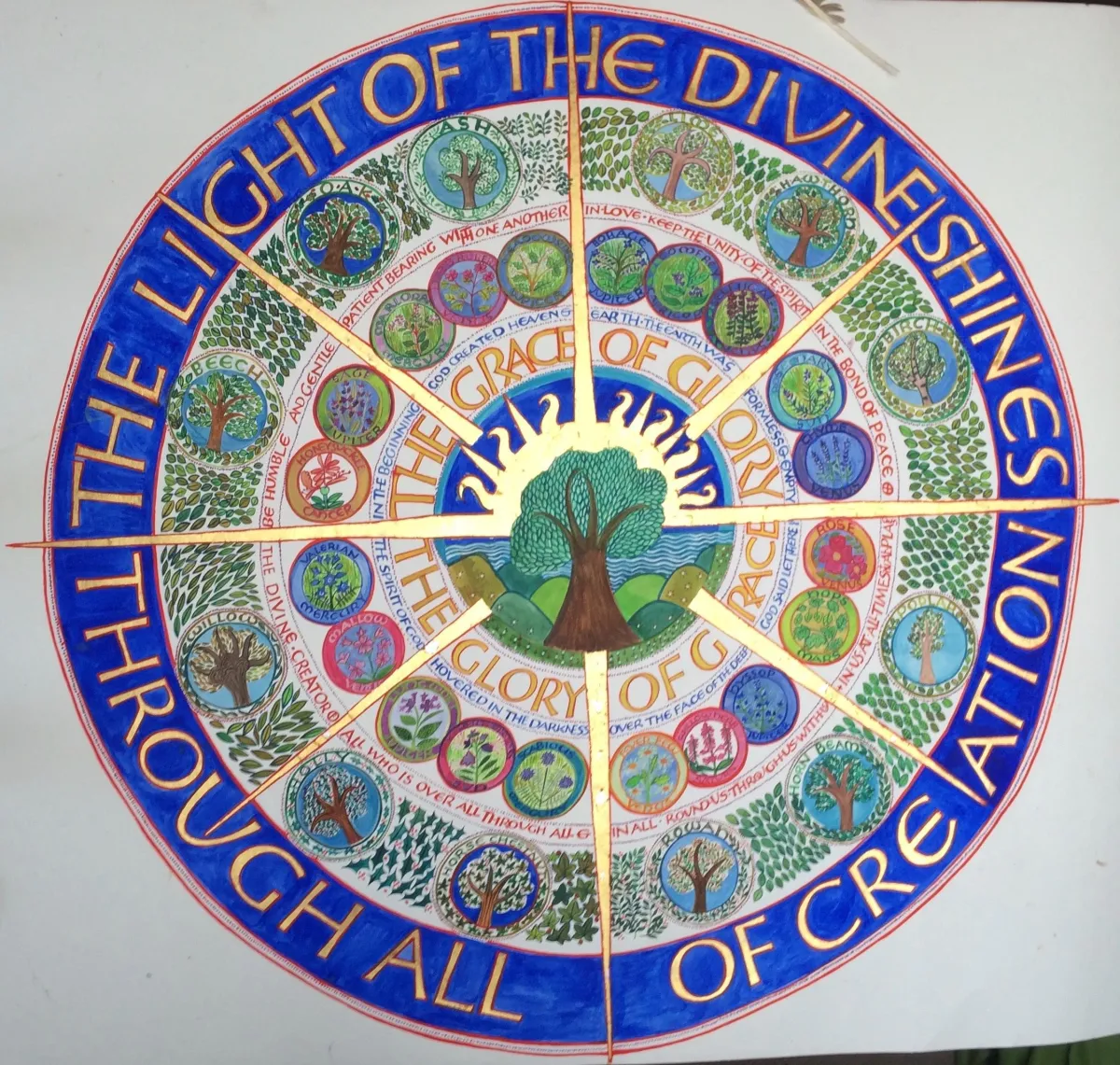
Unframed Prints
Copyrights 2025 | Diana Hoare | Privacy
